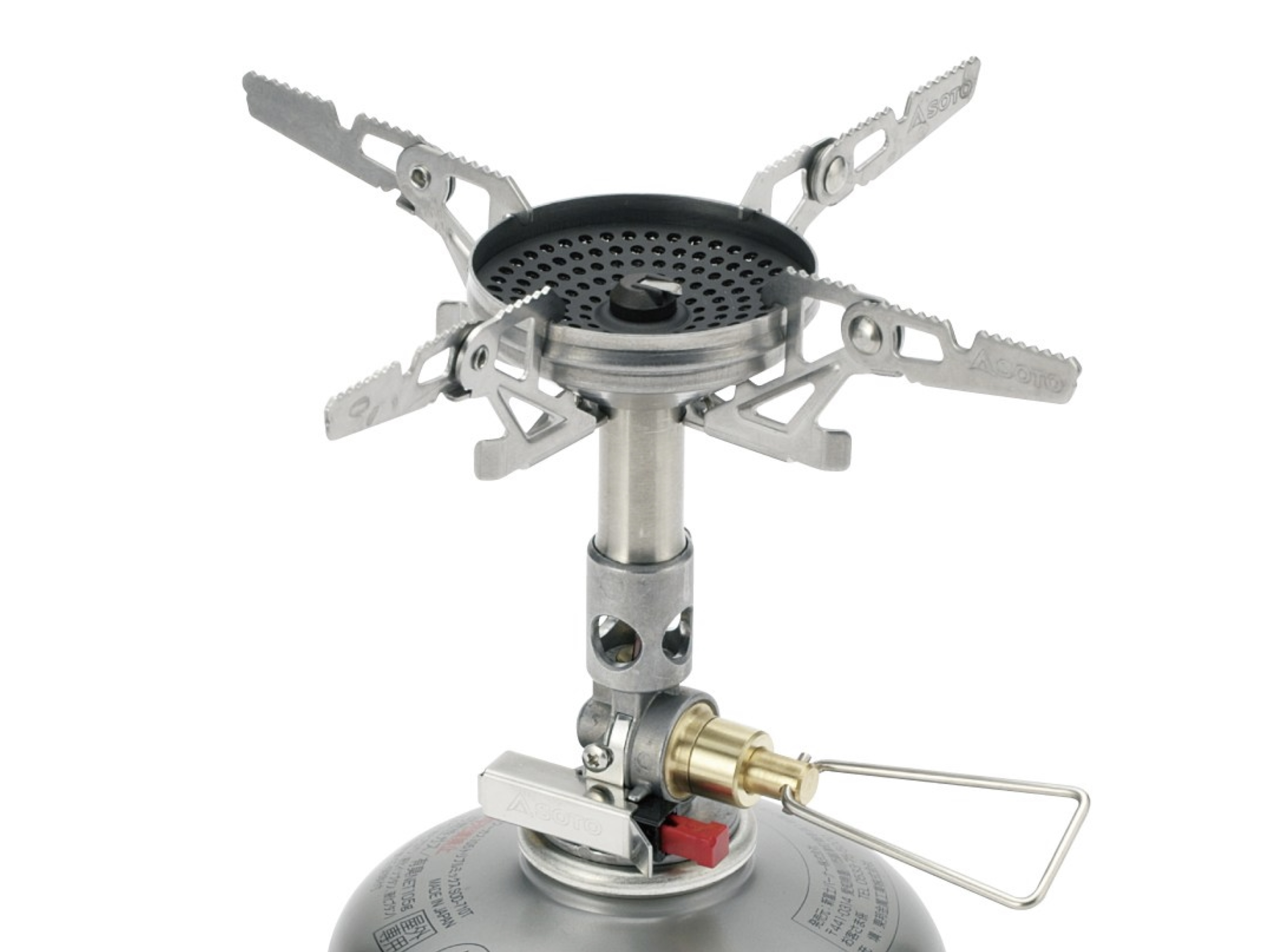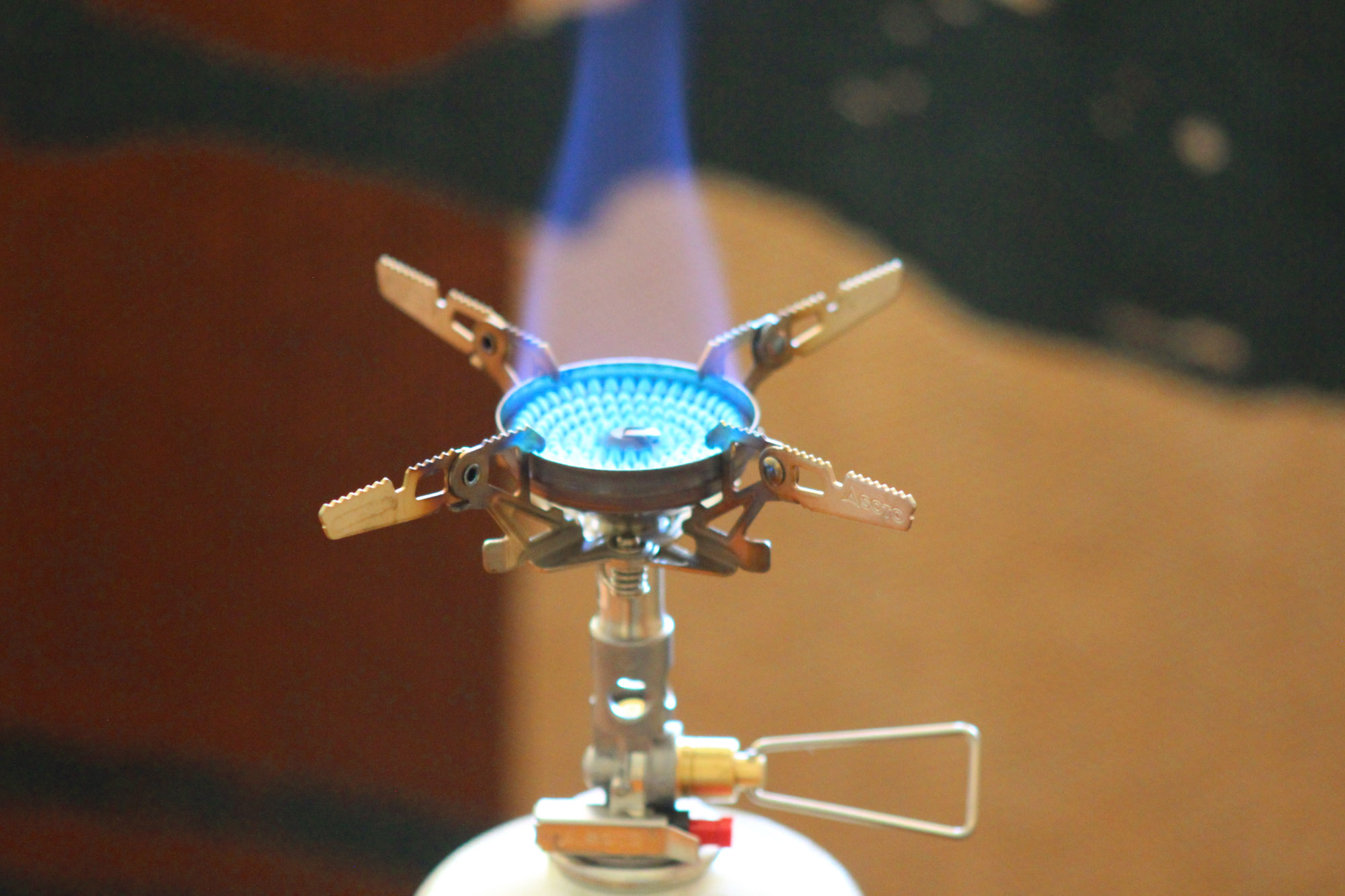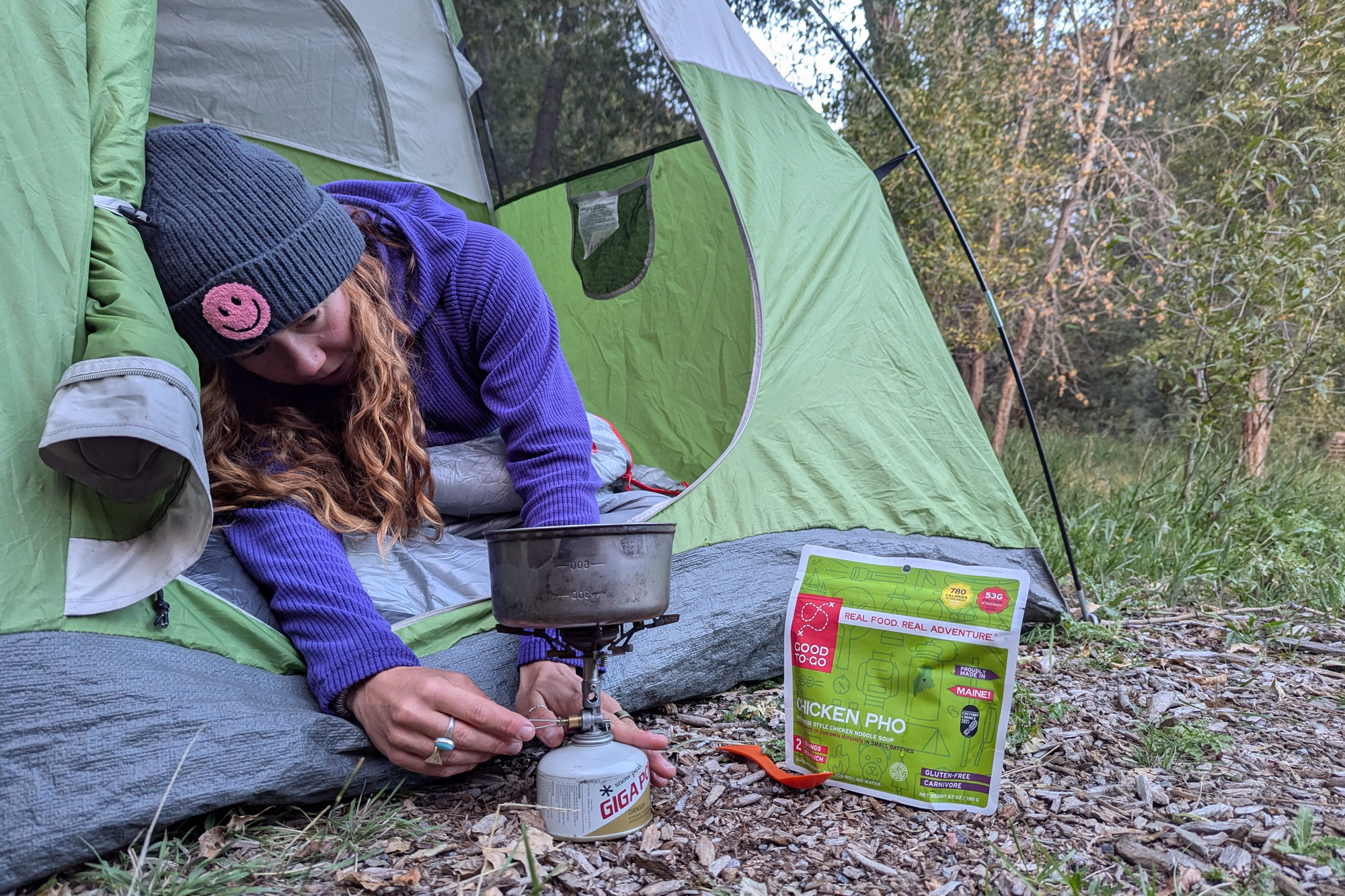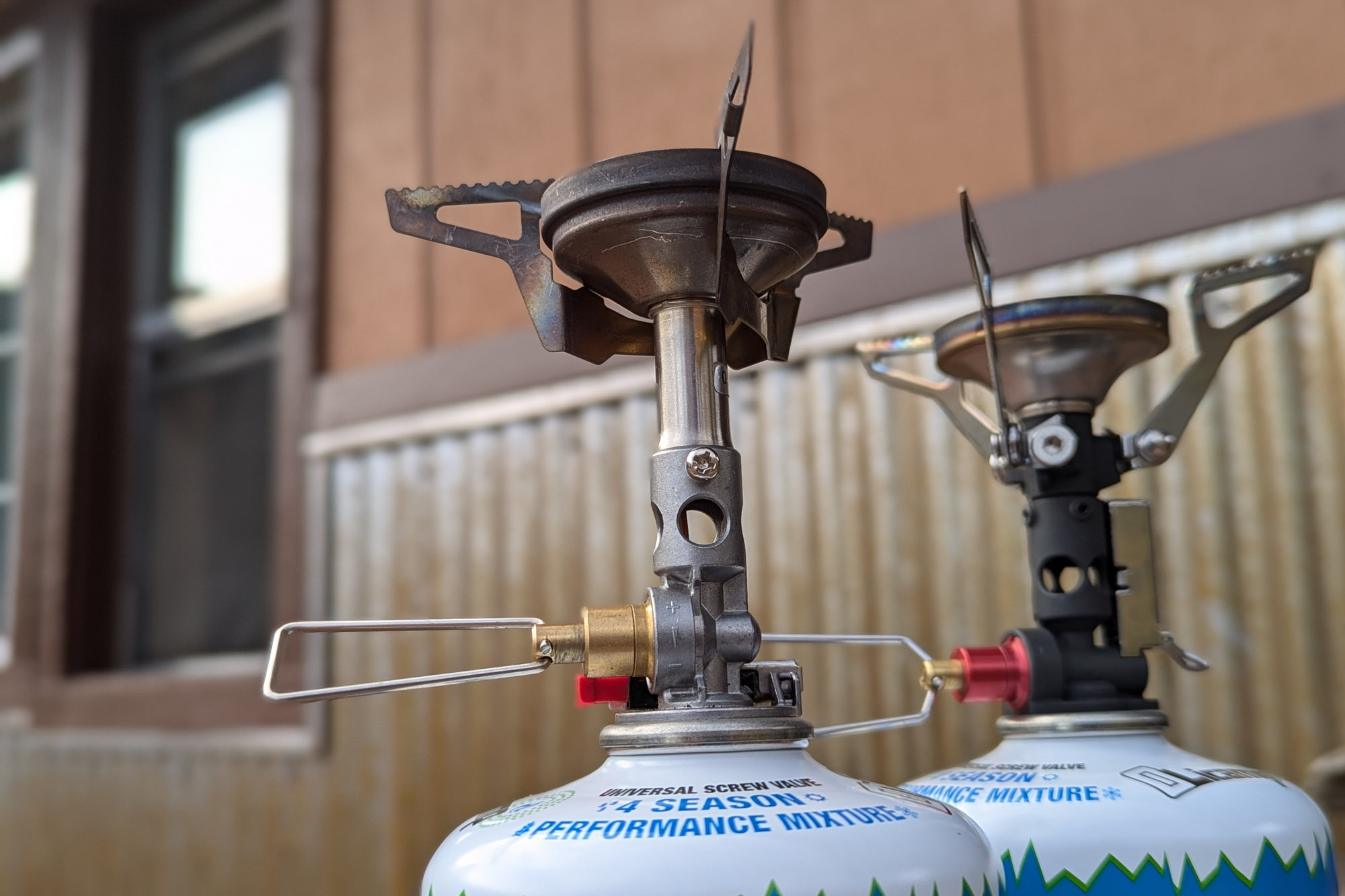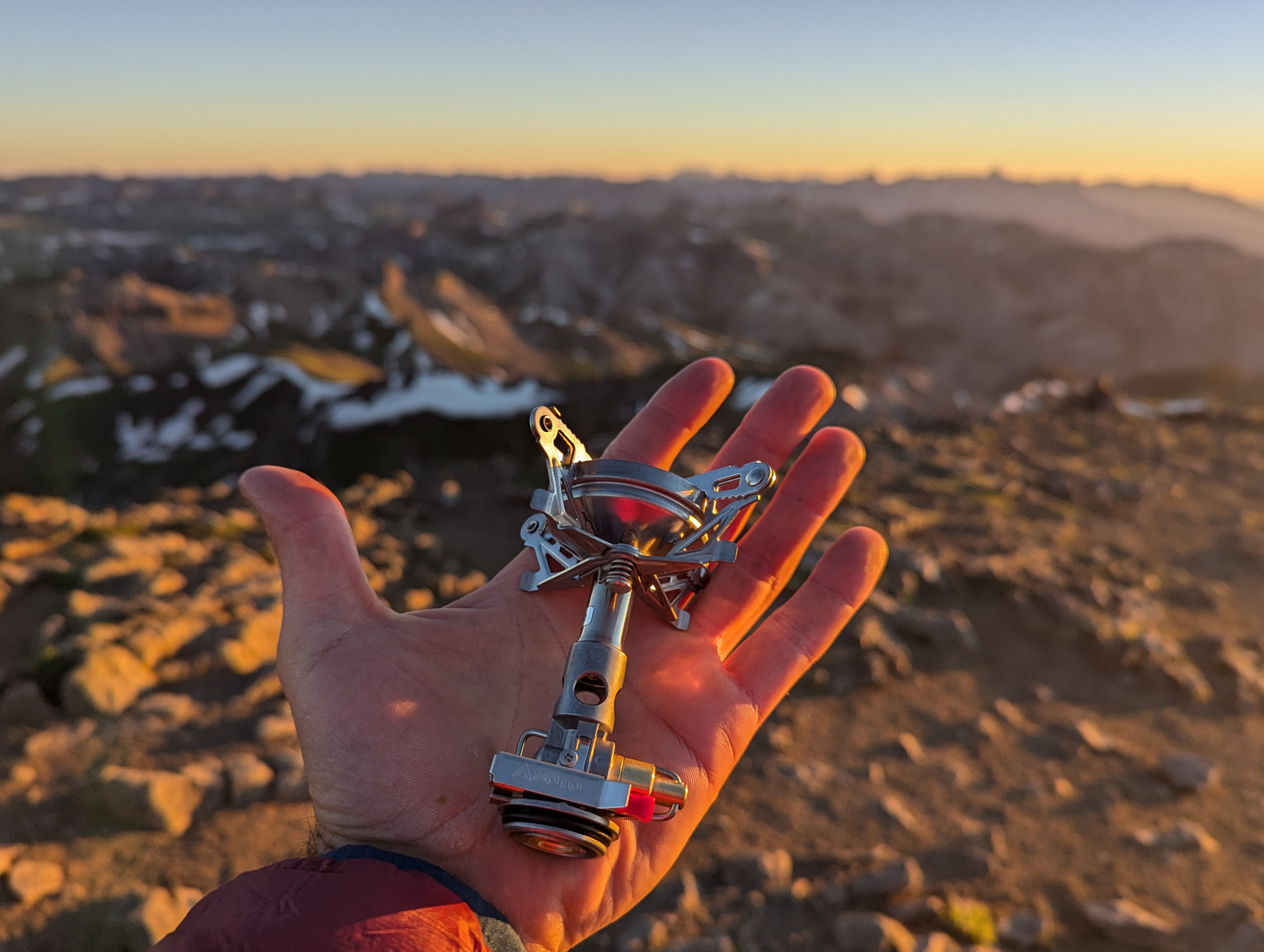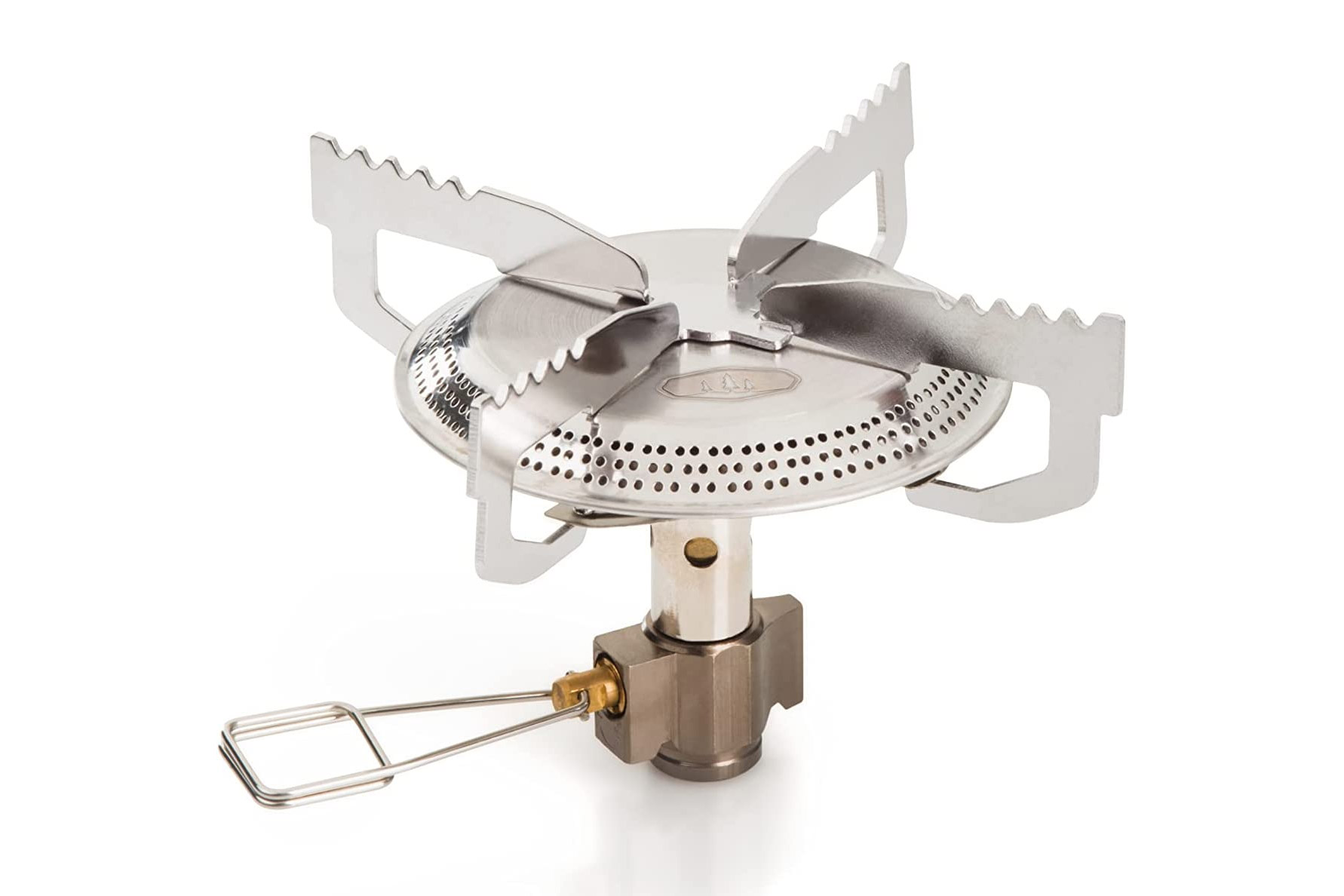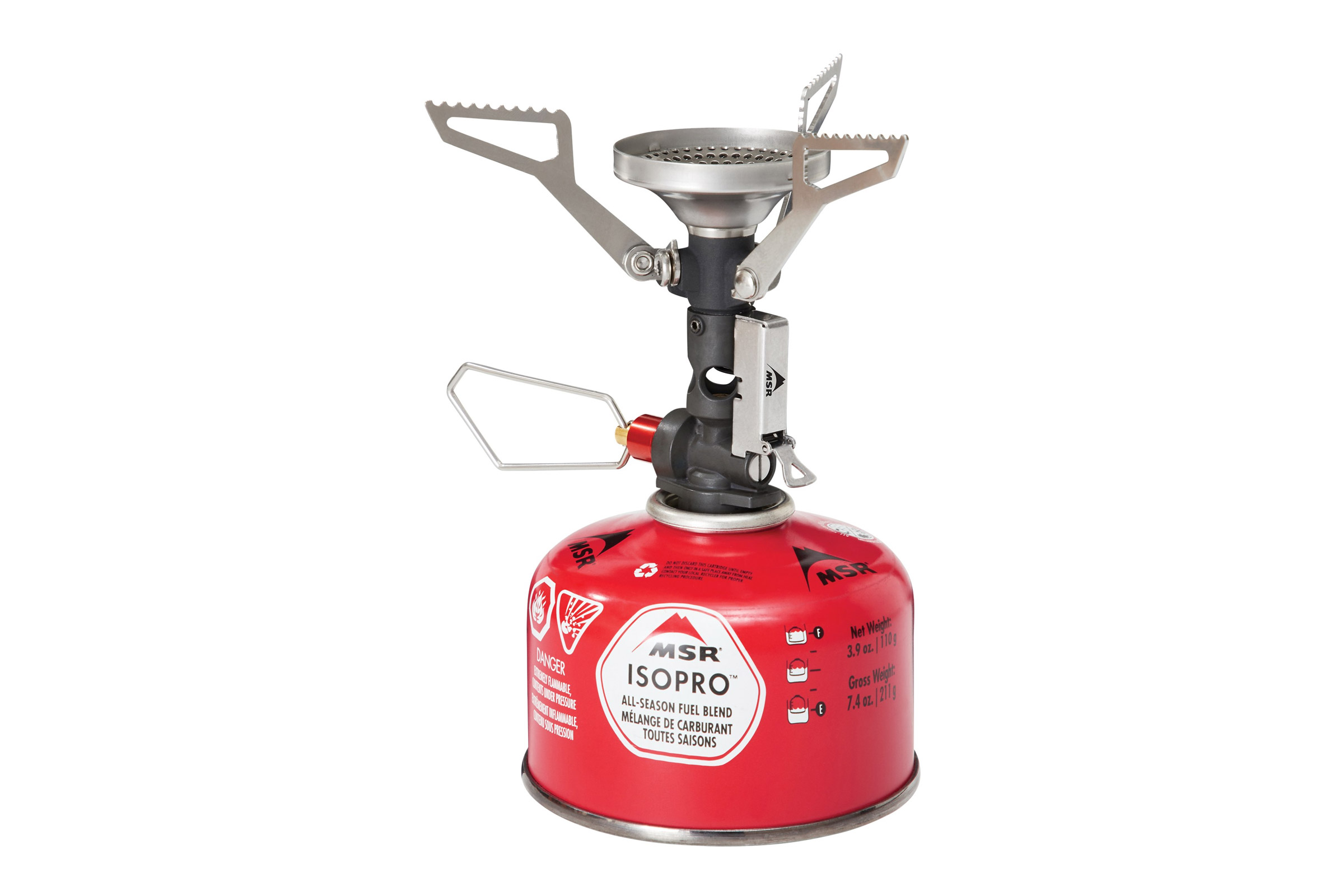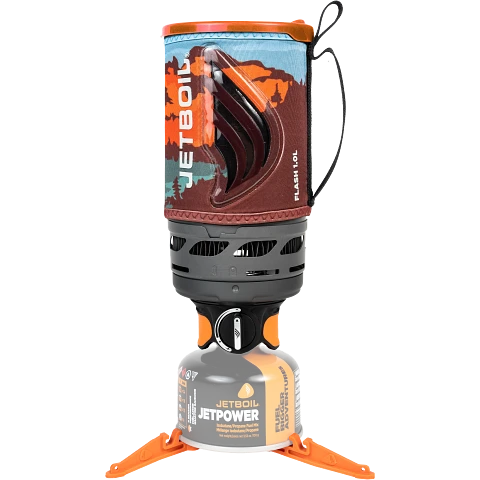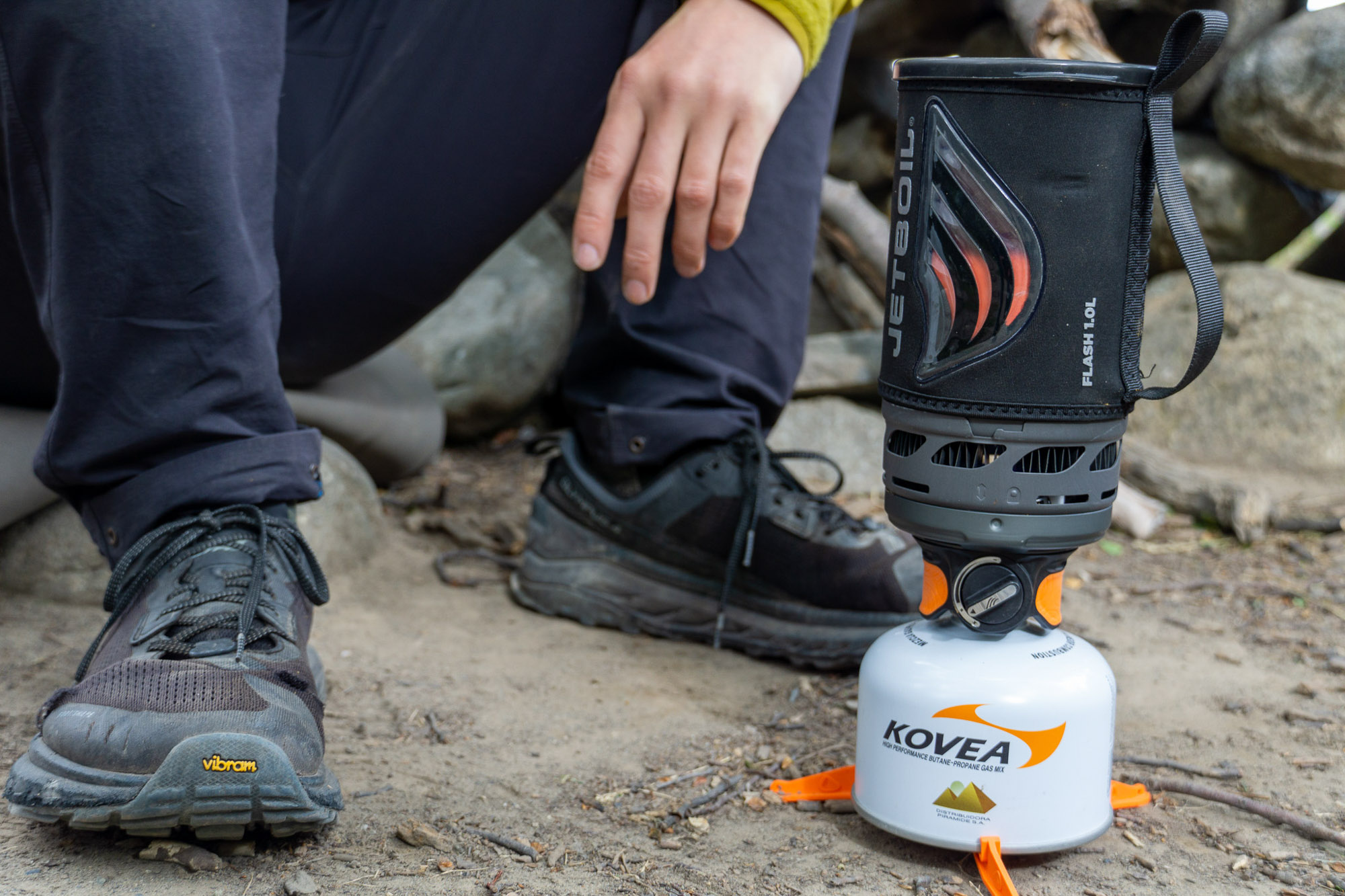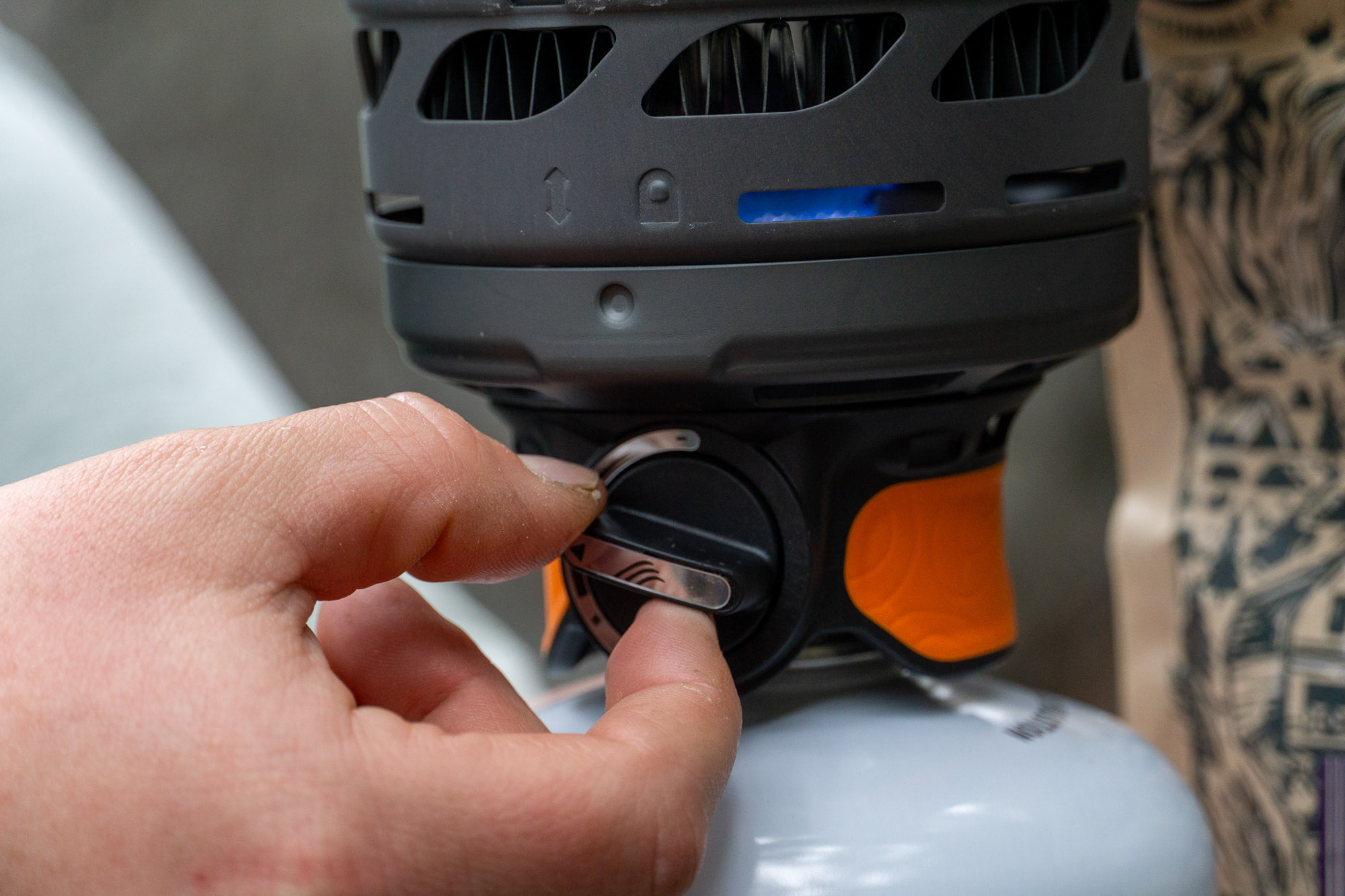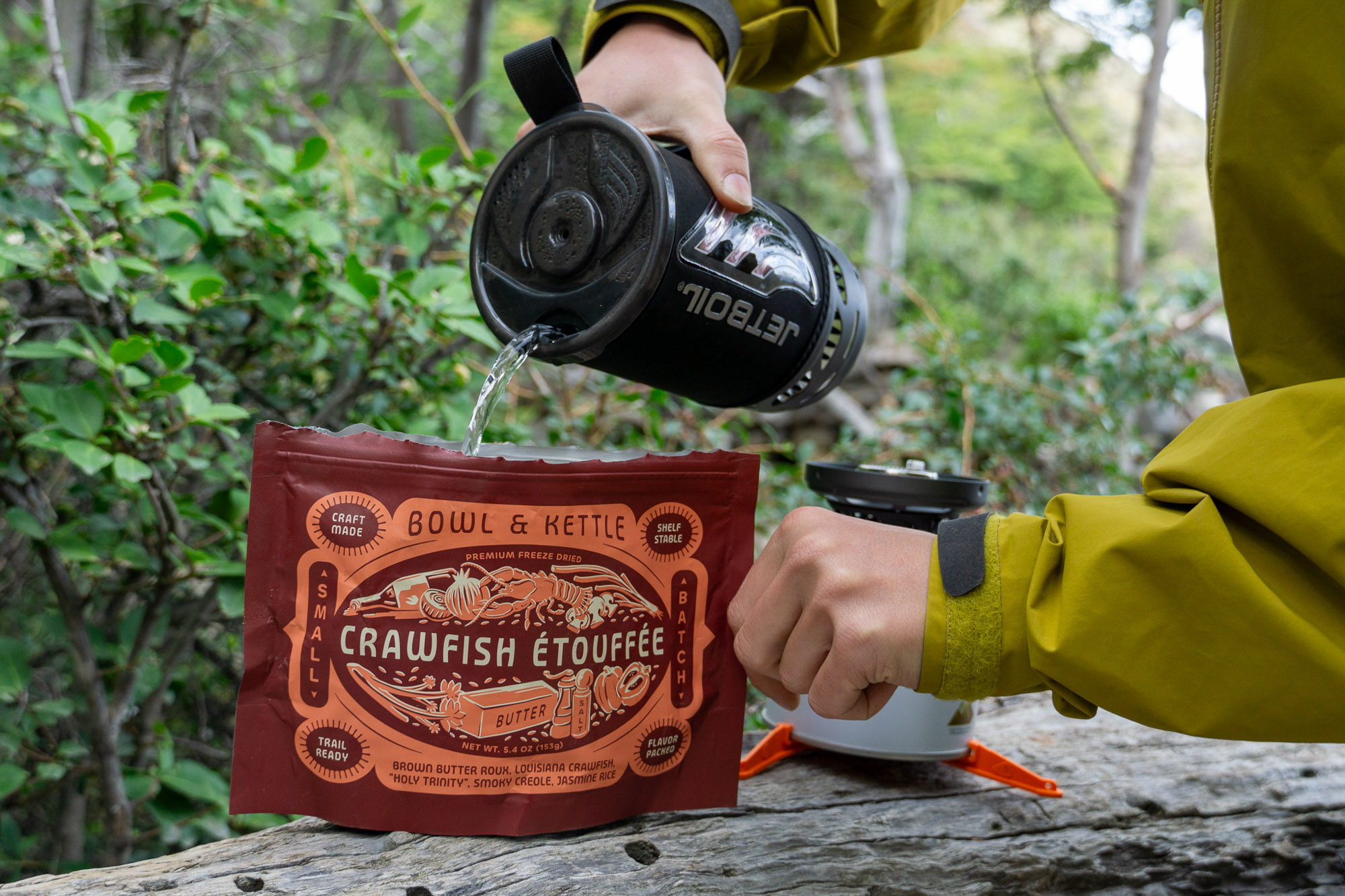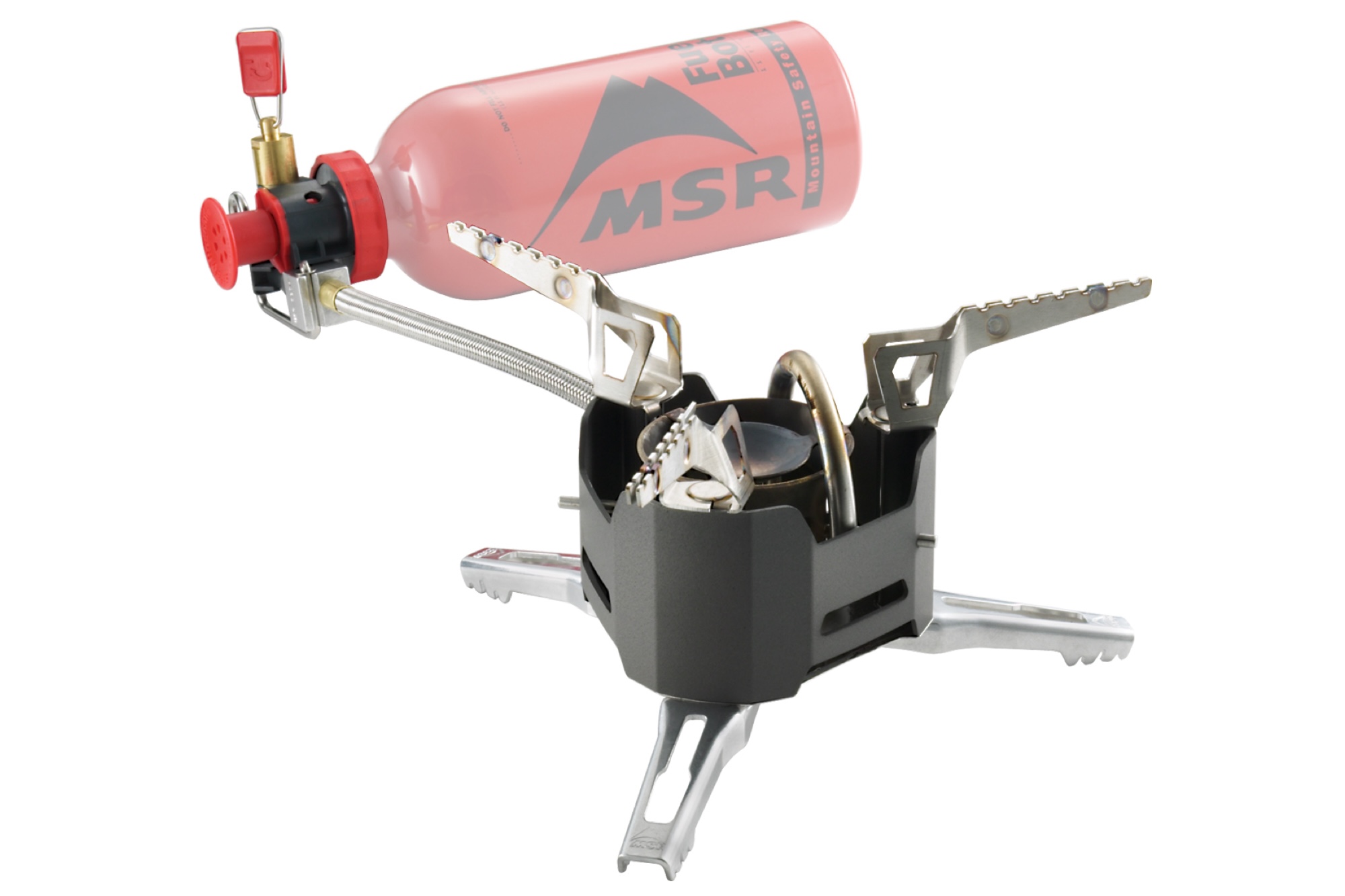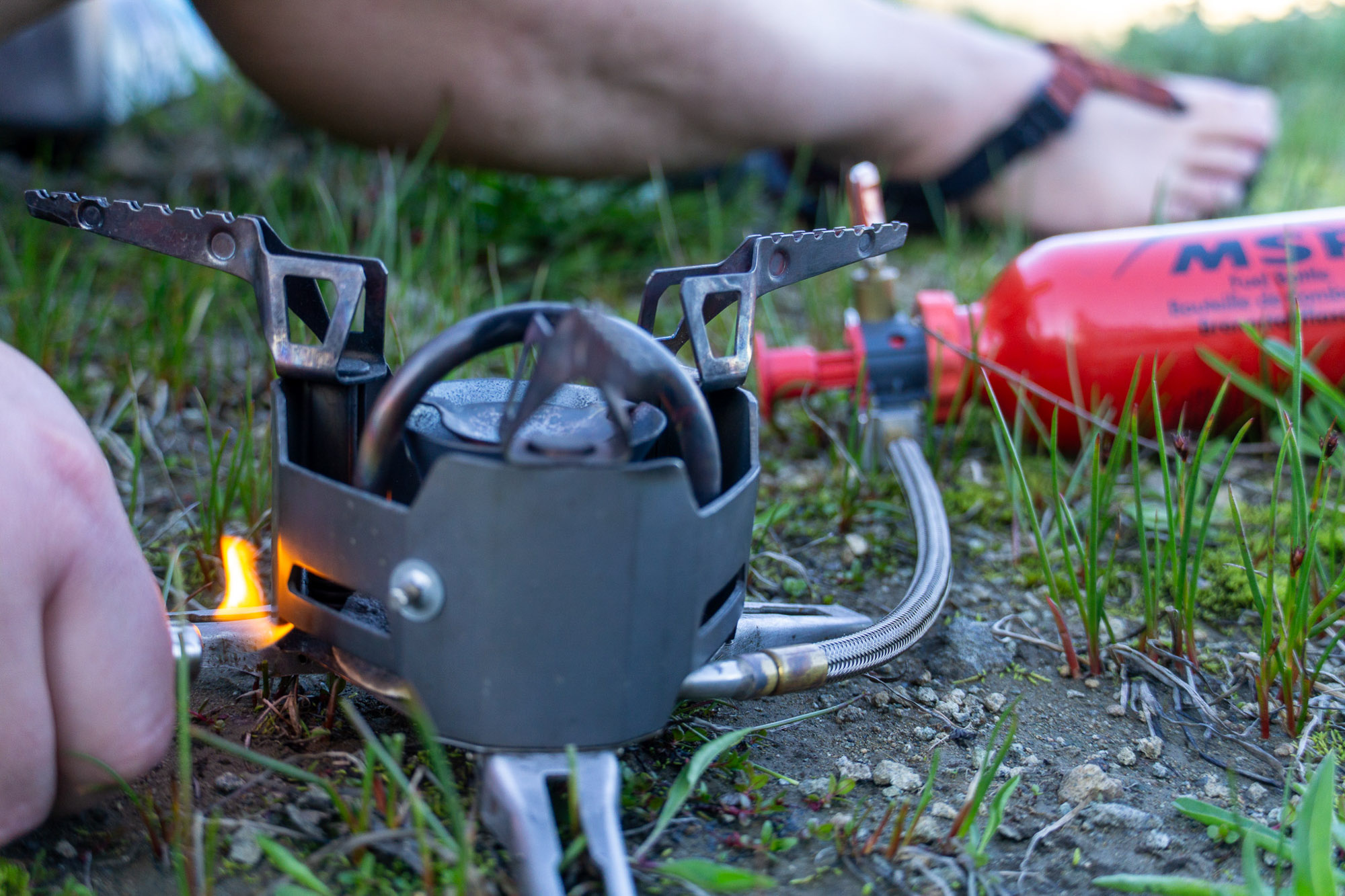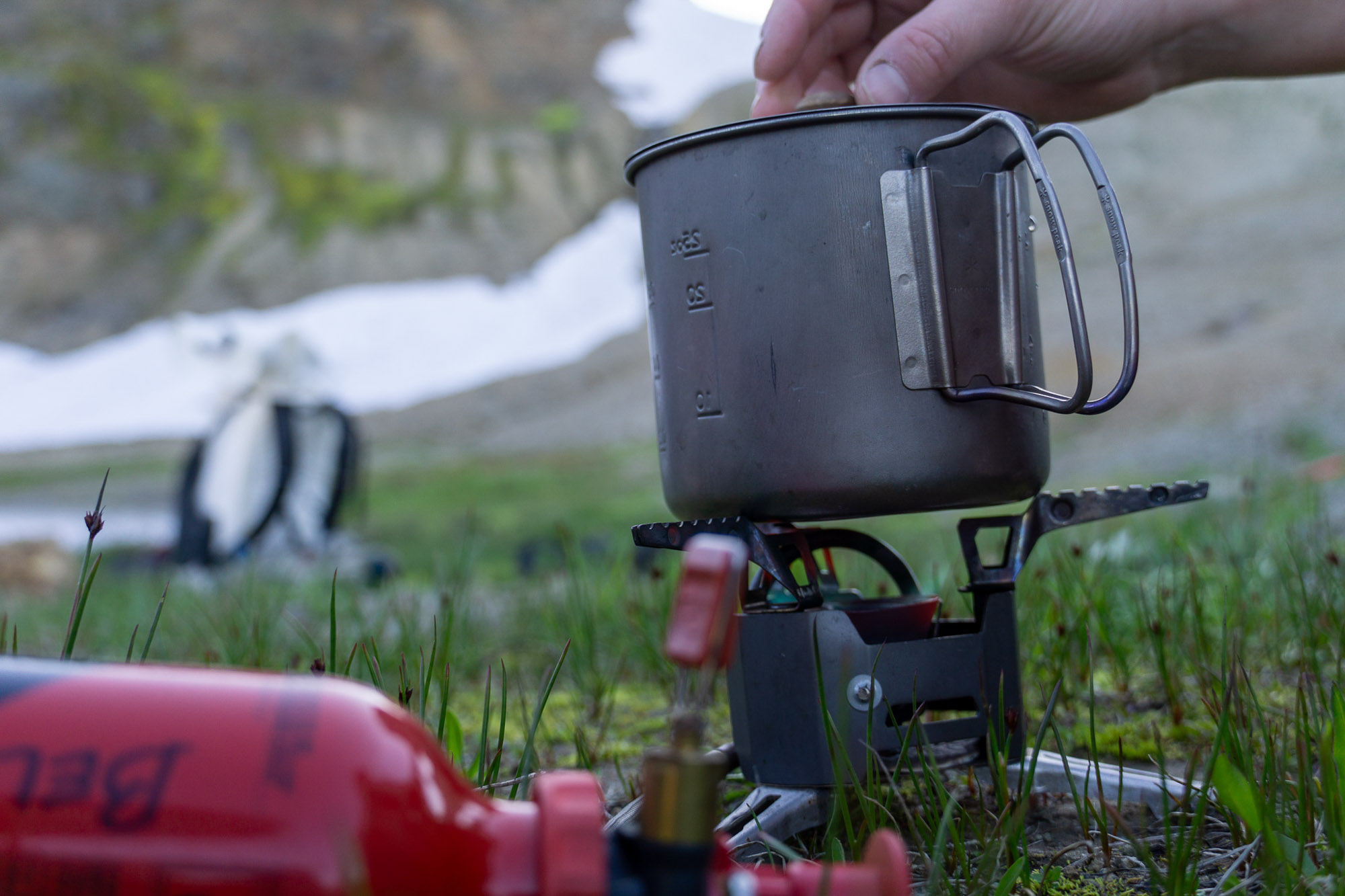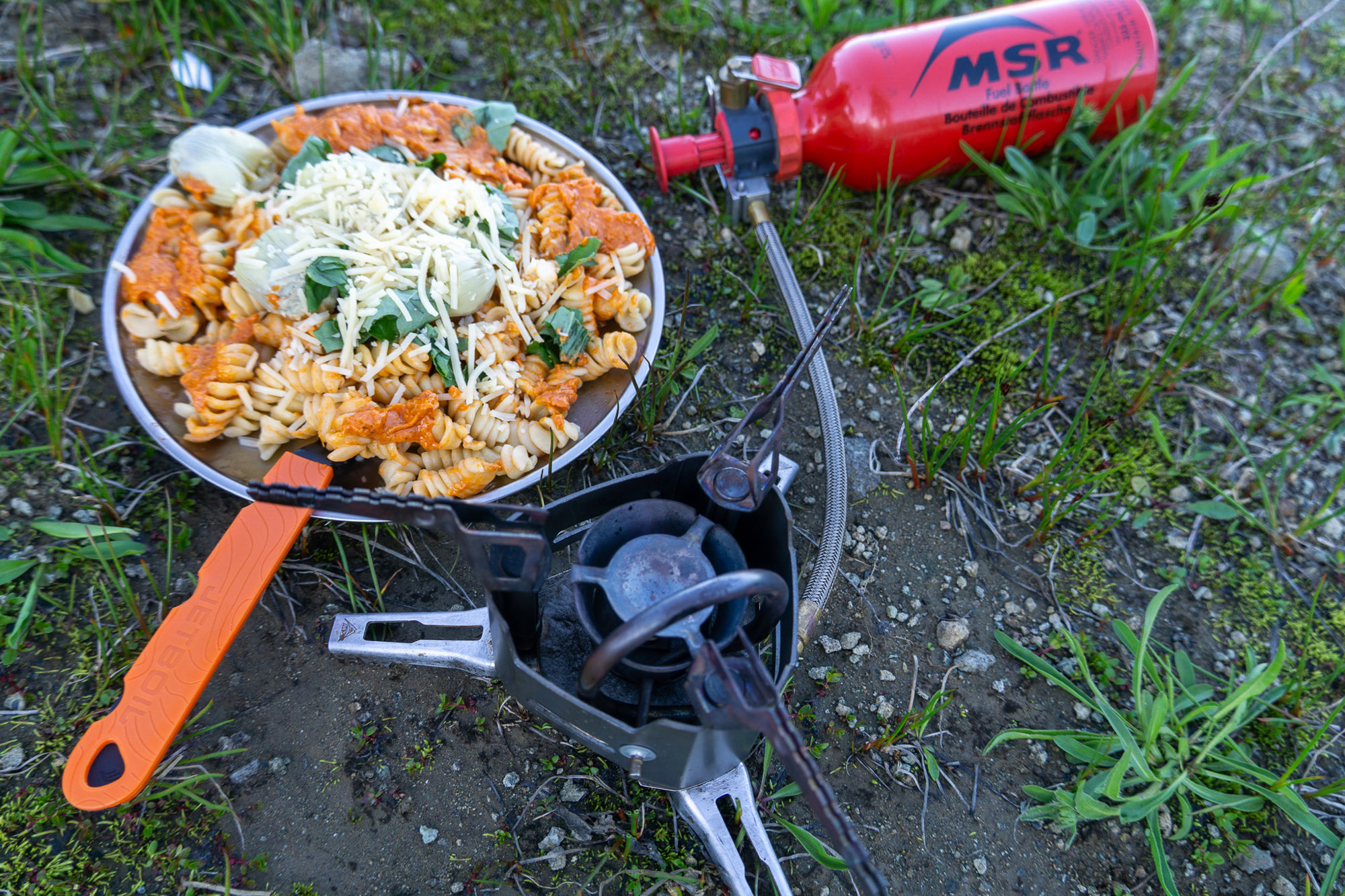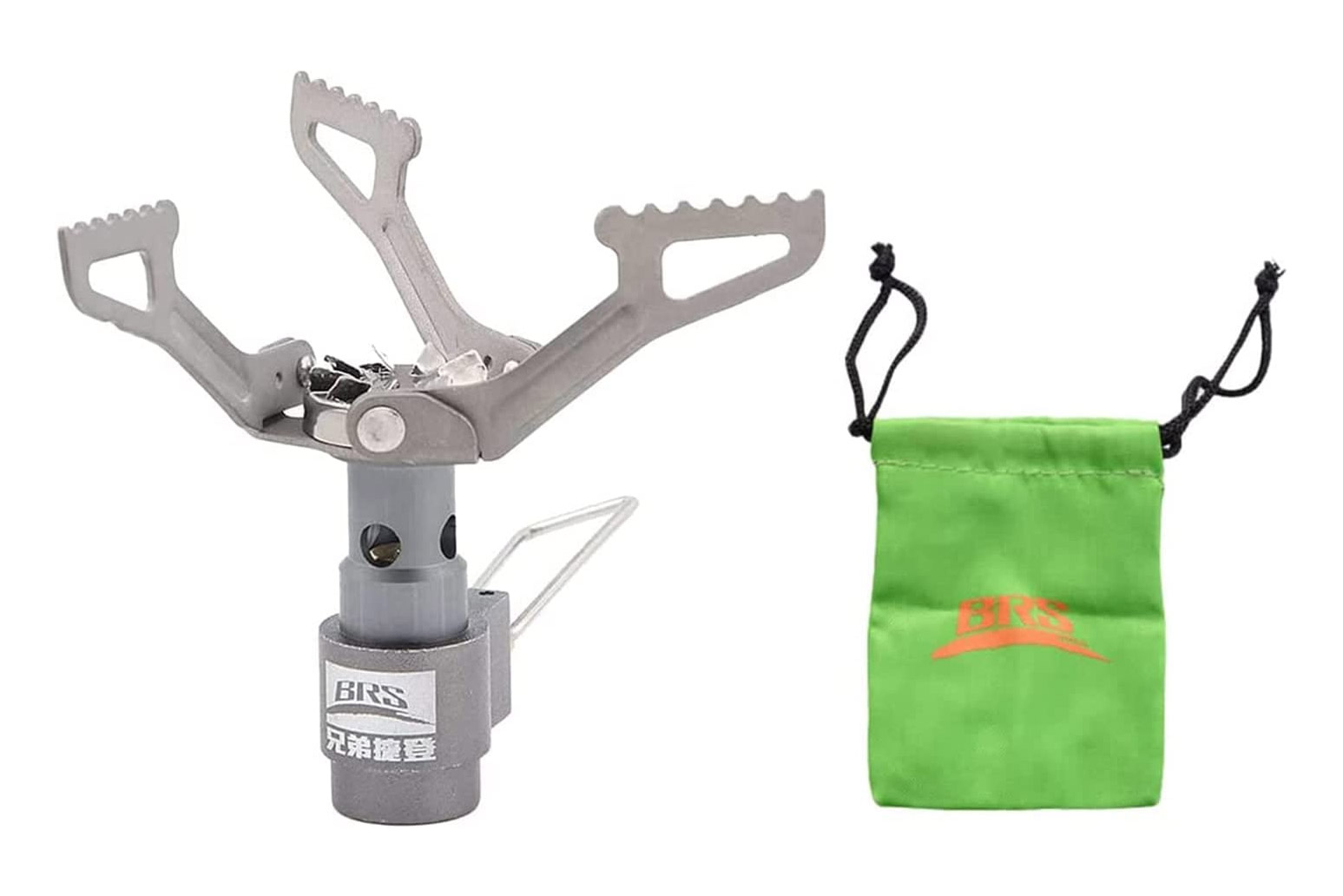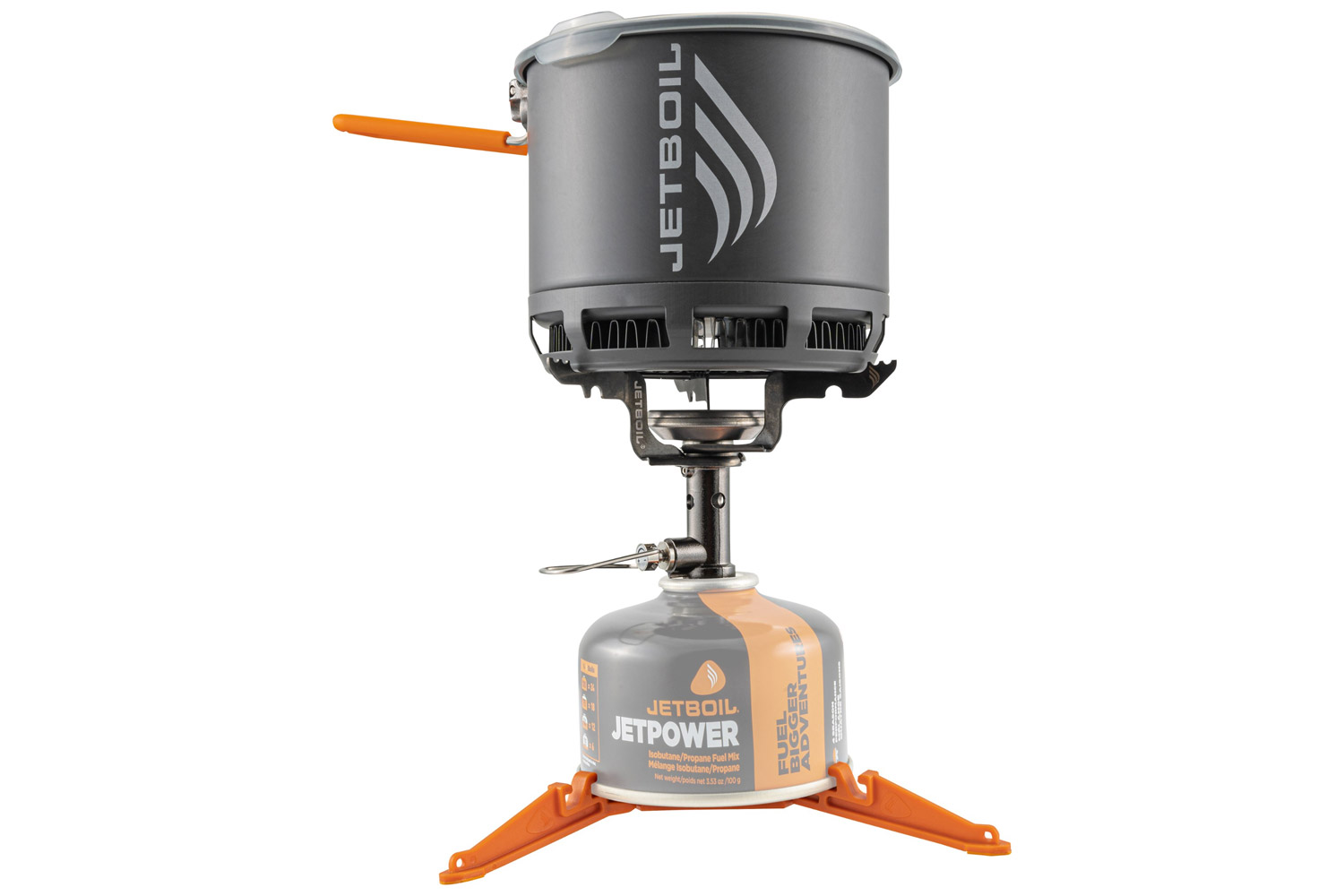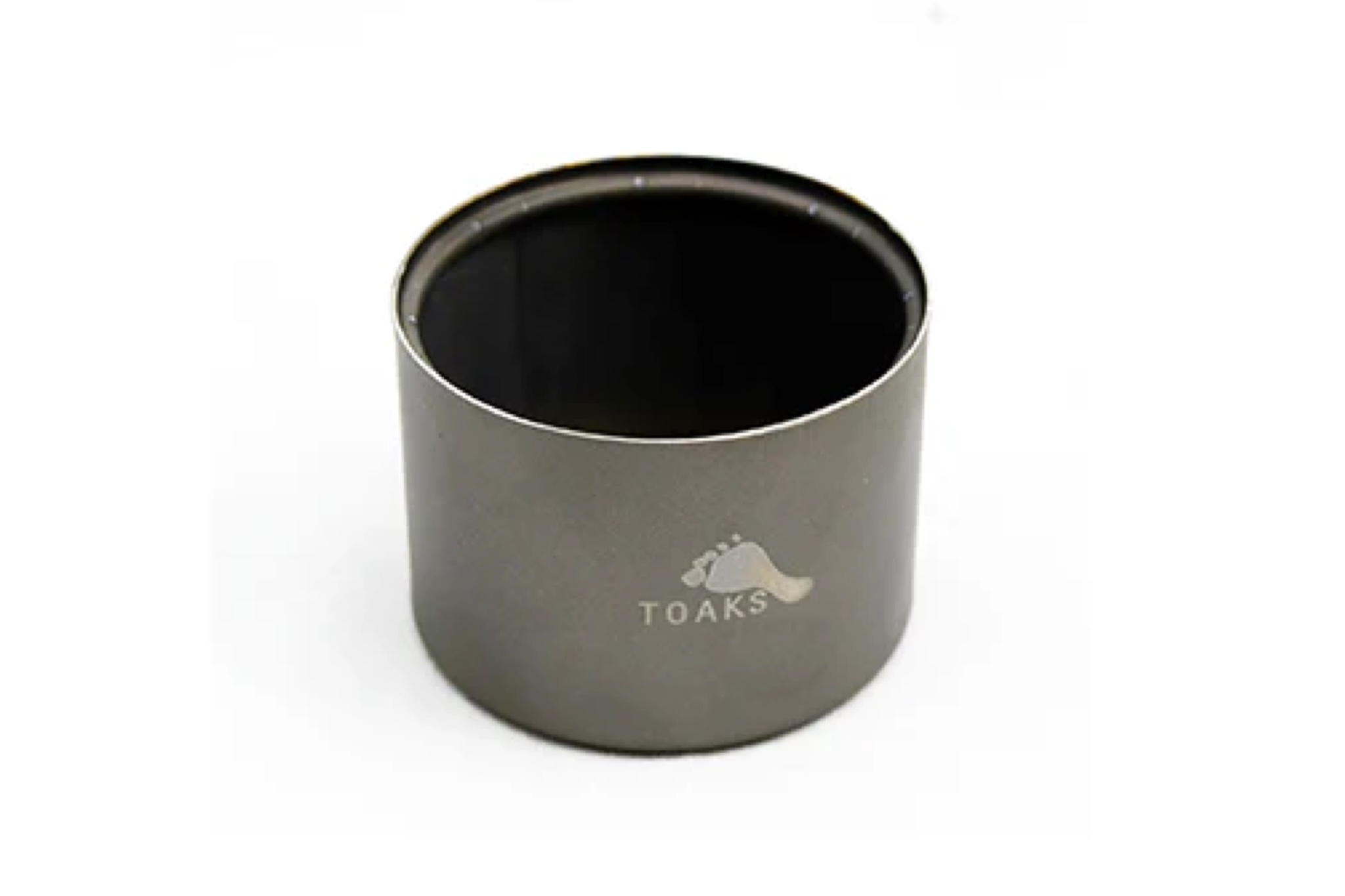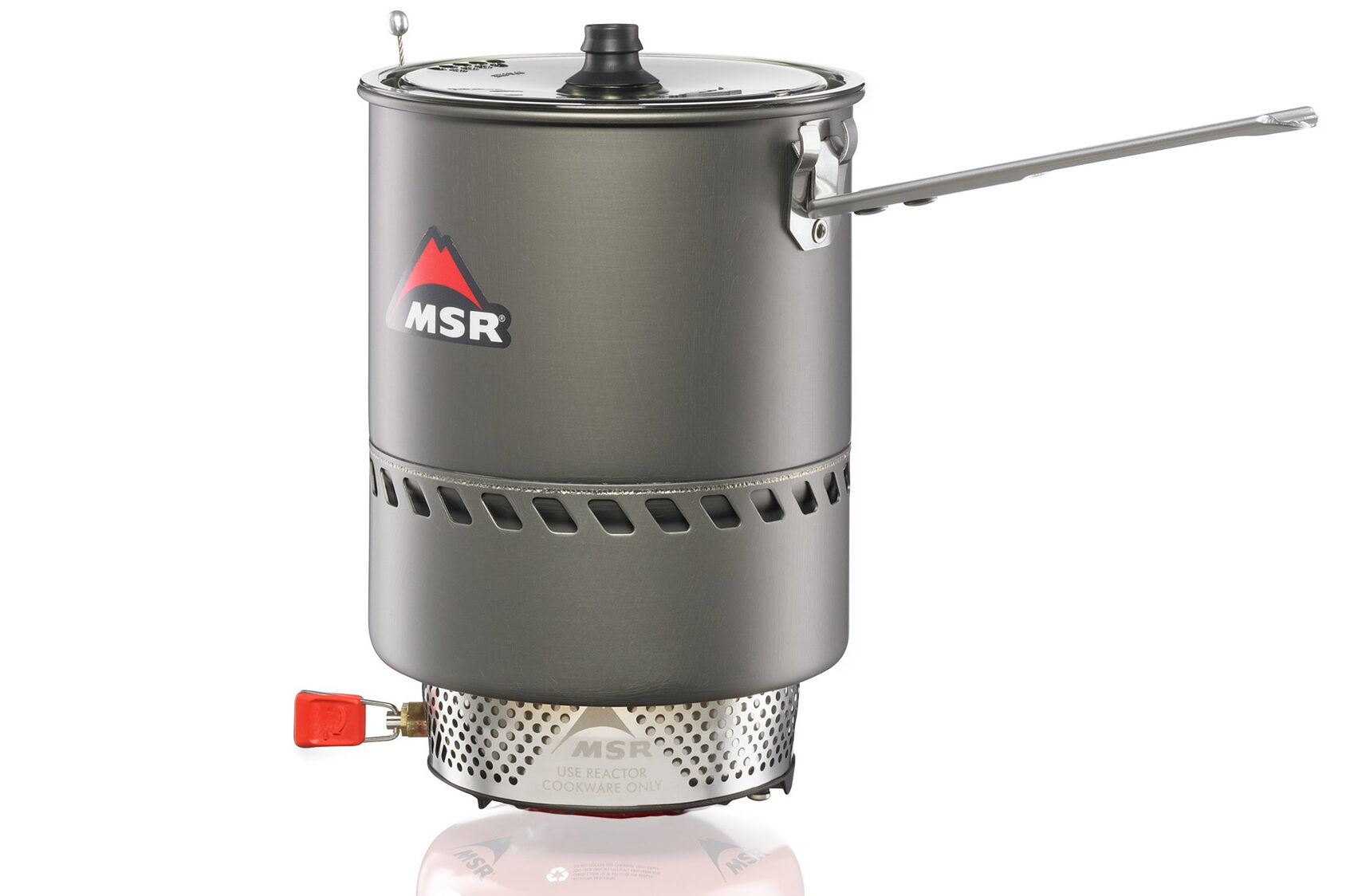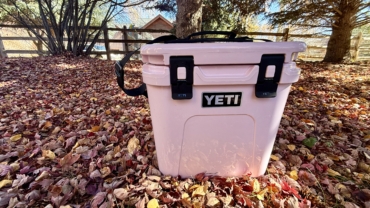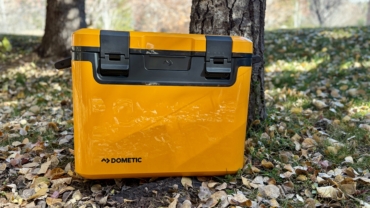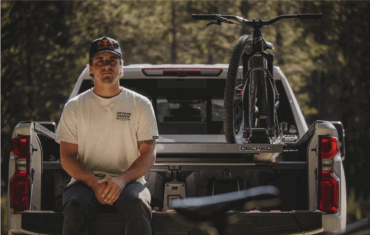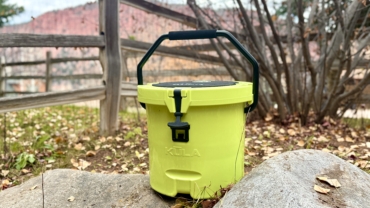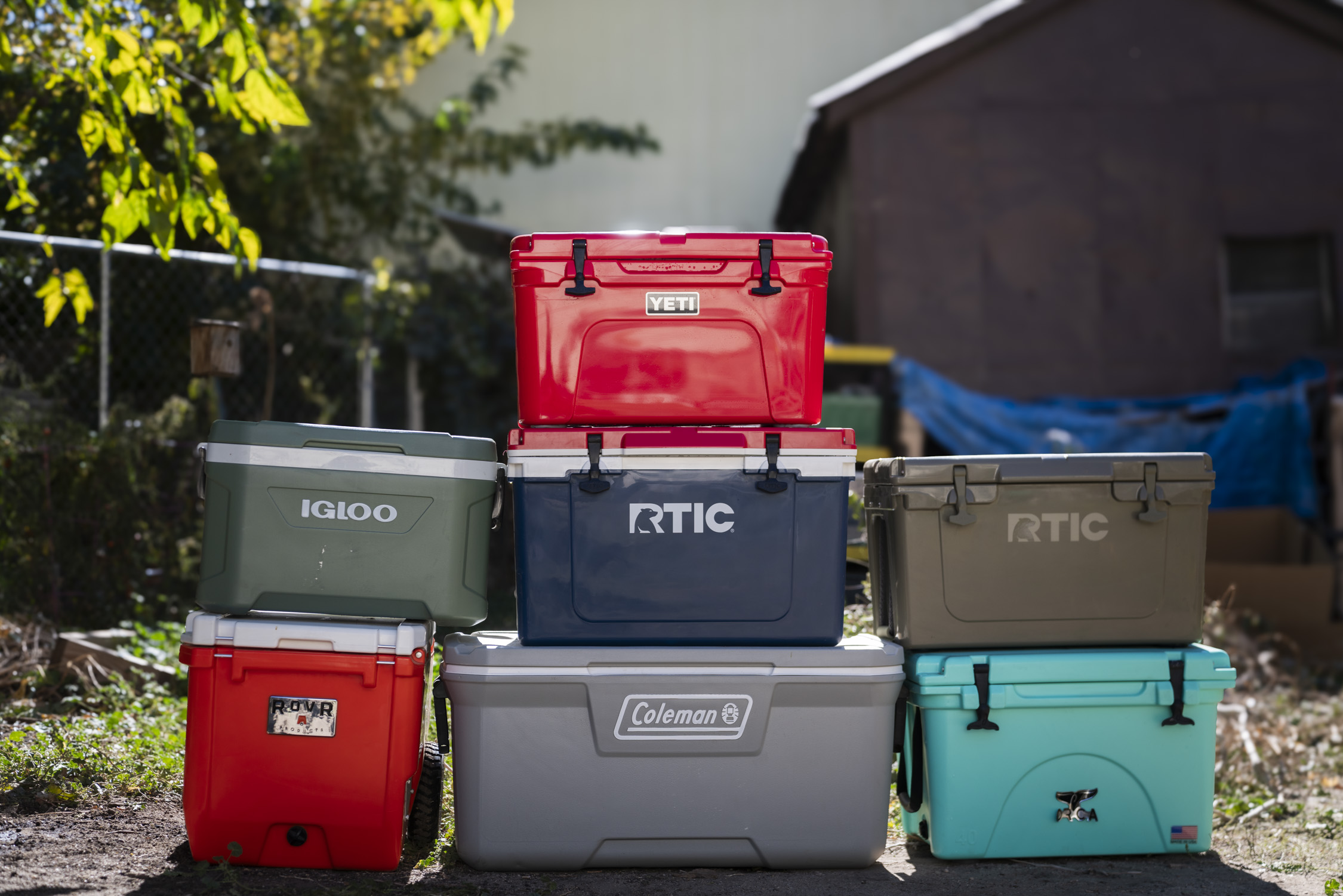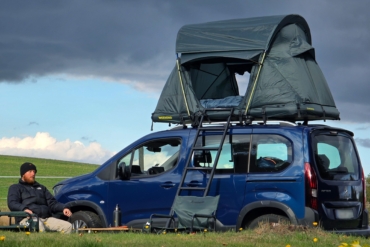Our squad of honorary backcountry chefs has collectively tested hundreds of the best backpacking stoves, whipping up meals in the most remote locations imaginable and in all sorts of conditions.
The testers for this guide have thru-hiked the Triple Crown of long trails, and we’ve been putting new models to the test for years when dialing in the selection for this guide. The primary factors we looked at were weight, packed size, boil time, and simmering abilities. Secondarily, we considered fuel efficiency, performance in wind and cold, and additional stove features.
While there isn’t a single backpacking stove that’s best for everyone out there, we’ve organized this guide into categories to help you find the best stove for you. Our top pick, the SOTO WindMaster, is an all-around winner for most backpackers out there, while the spend-wise GSI Outdoors Glacier does just as well on a picnic bench as it does on quick overnights.
Editor’s Note: We updated our Backpacking Stove guide on August 21, 2025, to add Jetboil’s most compact and lightweight stove system, the Stash. We’ve added new rating attributes to every stove we’ve tested to help compare options side-by-side.
The Best Backpacking Stoves of 2025
SOTO WindMaster
-
Boil Time
8.0
-
Fuel Efficiency
9.0
-
Weight
8.0
-
Ease of Use
9.0
- Weight: 3.0 oz w/ 4Flex support (87 g) and 2.3 oz. w/ Triflex support (67 g)
- Dimensions: 1.9 x 3.0 x 1.7 inch (stowed)
- Fuel type: Isobutane canister
- BTU output: 11,000
- Burn time: Approx. 1.5 hours with 8 oz. (250 g) canister
- Boil time (1 L): 4 min., 19 sec.
Pros
- Ultralight with removable pot supports
- Great wind resistance with deep burner head
- Very fuel efficient
- Cheaper than comparable MSR stoves
Cons
- Not quite as hot as comparable stoves
- Too small for use with large pots and pans
- Piezo igniter will eventually fail
GSI Outdoors Glacier Stove
-
Boil Time
6.0
-
Fuel Efficiency
6.0
-
Weight
6.0
-
Ease of Use
7.0
- Weight: 5.8 oz.
- Fuel Type: Canister
- Burn Time: N/A
- Boil Time (1 Liter): 5 minutes, 30 seconds
- Piezo Ignitor: No
Pros
- Affordable price
- Large, powerful burner
- Good simmer abilities
- Tough to damage
Cons
- Not the fastest boil time
- On the heavier side
- Pots aren't held as tightly to the stand
- Doesn't collapse
MSR PocketRocket Deluxe
-
Boil Time
9.0
-
Fuel Efficiency
8.0
-
Weight
7.0
-
Ease of Use
8.0
- Weight: 2.9 oz.
- Fuel Type: Isobutane
- Burn Time: 60 min. per 8 oz. of IsoPro fuel
- Boil Time (1 L): 3 min., 23 sec.
- Piezo Ignitor: Yes
Pros
- Very fast boil time
- Effective simmer capabilities
- Very compact size and comes with small stuff sack
- Raised sides of burner head help reduce stove being blown out
- Wide mixture handle is easy to dial in
Cons
- Piezo ignitors aren't as durable as SOTO versions, and aren't user-replaceable
- Not as fuel-efficient as some canister stoves
- Second best at wind resistance
Jetboil Flash 1.0L Fast Boil
-
Boil Time
8.0
-
Fuel Efficiency
8.0
-
Weight
7.0
-
Ease of Use
9.0
- Weight: 13 oz.
- Dimensions: 4.25" x 7.5"
- Fuel Type: Isobutane
- BTU Output: 5,300 BTU/ hour
- Burn Time: ~40 min. on 100 g canister
- Boil Time: 4 min.
Pros
- Even easier to use than previous version
- Highly reliable integrated design
- Highly durable ignitor
- Cool aesthetic and multiple patterns available
Cons
- Still easy to topple over
- Still has easy-to-lose parts (like the cup)
MSR WhisperLite Universal
-
Boil Time
8.0
-
Fuel Efficiency
7.0
-
Weight
6.0
-
Ease of Use
6.0
- Weight: 13.7 oz.
- Fuel Type: Liquid or Canister
- Burn Time: 1 hr. 50 min. (20 oz. white gas)/ 1 hr. 15 min. (8 oz. isobutane)
- Boil Time (1 Liter): 3 minutes, 30 seconds (white gas)
- Piezo Ignitor: No
Pros
- Can use a variety of fuel types
- Great for cold weather cooking
- Performs well at high altitudes
- Field repairable
Cons
- Not the most packable
- Pretty heavy
- Need to prime the stove and do maintenance in the field
MSR XGK EX
-
Boil Time
9.0
-
Fuel Efficiency
7.0
-
Weight
6.0
-
Ease of Use
7.0
- Weight: 13.2 oz.
- Fuel Type: Liquid white gas
- Burn Time: 1 hr. 49 min. per 20 oz. of white gas
- Boil Time (1 Liter): 3 minutes, 30 seconds
- Piezo Ignitor: No
Pros
- Multi fuel stove can burn white gas, diesel, and kerosene
- Rugged build employs user-replaceable hardware for servicing
- Shaker Jet keeps fuel jet clean throughout trip
- Broad pot stand can accommodate stock pots
Cons
- Will need to purchase separate fuel bottles
- Quite loud roar when running
- Expensive
BRS-3000T Ultralight Stove
-
Boil Time
7.0
-
Fuel Efficiency
7.0
-
Weight
9.0
-
Ease of Use
7.0
- Weight: 26 g (0.92 oz.)
- Fuel Type: Canister
- Burn Time: N/A
- Boil Time (1 Liter): 4 minutes
- Piezo Ignitor: No
Pros
- Affordable price
- Super compact packed size
- Ultralight
- Hot enough to boil water fairly quickly
Cons
- Small burner head
- Not the most fuel-efficient stove
- Quality control isn't the best
Other Backpacking Stoves We Enjoy
-
Boil Time
8.0
-
Fuel Efficiency
7.0
-
Weight
8.0
-
Ease of Use
8.0
- Weight: 2.6 oz.
- Fuel Type: Canister
- Burn Time: Roughly 60 min. per 8 oz. of IsoPro fuel
- Boil Time (1 Liter): 3.5-4.5 minutes, depending on wind
- Piezo Ignitor: No
Pros
- Proven design
- Lightweight but durable
- Affordable
- Solid simmer control
Cons
- No piezo lighter
- Somewhat unstable
- No pressure regulator as in the Deluxe model
-
Boil Time
9.0
-
Fuel Efficiency
8.0
-
Weight
8.0
-
Ease of Use
7.0
- Weight: 7.1 oz.
- Fuel Type: Isobutane
- Burn Time: 75 minutes
- Boil Time (1 Liter): 2 minutes, 35 seconds
- Piezo Ignitor: No
Pros
- Lightweight
- Fast boil time at 2.5 min. for 16 oz. of water
- Grooves in stove legs keep pot from sliding off
Cons
- Even with grooves in the stove legs, there is still the potential for this to be knocked over
- No built-in ignitor
-
Boil Time
6.0
-
Fuel Efficiency
7.0
-
Weight
8.0
-
Ease of Use
7.0
- Weight: 0.7 oz.
- Fuel Type: Liquid/Alcohol
- Burn Time: N/A
- Time to Boil: 5 min. 30 sec per 475 ml of fuel
- Piezo Ignitor: No
Pros
- Insanely ultralight titanium design
- Packable into almost any cook pot
- Cheap price
- Uses alcohol fuel, which can be easy to find in remote places
Cons
- Limited use cases with restrictions in wilderness areas
- Not the most stable pot stand
- No flame regulator
-
Boil Time
9.0
-
Fuel Efficiency
8.0
-
Weight
7.0
-
Ease of Use
7.0
- Weight: 1 lb. 3 oz.
- Fuel Type: Canister
- Burn Time: 1 hr. 20 min. per 8 oz. of IsoPro fuel
- Boil Time (1 Liter): 3 minutes
- Piezo Ignitor: No
Pros
- Incredible wind-resistance
- Super fast boil time
- Minimal operation noise
- Radiant and convective heat transfer
- Able to be suspended during use
Cons
- Heavy and bulky
- Difficult to simmer
- Expensive
-
Boil Time
7.0
-
Fuel Efficiency
7.0
-
Weight
7.0
-
Ease of Use
7.0
- Weight: 14 oz.
- Fuel Type: Isobutane
- Burn Time: 60 minutes per 100g canister
- Boil Time (1 Liter): 3 minutes 25 seconds
- Piezo Ignitor: Yes
Pros
- Easy to cook and eat from
- Solid heat distribution
- Packable design fits a 4 oz. fuel canister inside
Cons
- Not as windproof as similar designs
- Handle rivets inside the pot complicate cleaning a bit
- Doesn't boil as quick as other stove systems
-
Boil Time
6.0
-
Fuel Efficiency
6.0
-
Weight
8.0
-
Ease of Use
7.0
- Weight: 4.1 oz.
- Fuel Type: Wood
- Burn Time: Endless depending on wood supply
- Boil Time (1 Liter): 8-10 minutes
- Piezo Ignitor: No
Pros
- Light and packable
- Titanium cools quickly after use
- Simple to set up
Cons
- Soot buildup on pots
- Takes work to get going and keep lit
- No sticks? No cooking
-
Boil Time
7.0
-
Fuel Efficiency
7.0
-
Weight
6.0
-
Ease of Use
7.0
- Weight: 15.3 oz.
- Fuel Type: Canister
- Burn Time: 95 minutes per 227 g canister
- Boil Time (1 Liter): 4 min., 30 sec
- Piezo Ignitor: No
Pros
- Solid wind-resistance
- Great fuel efficiency
- Integrated cup is nice for measuring out ingredients
- Broad canister stand keeps things upright
Cons
- On the expensive side
- Heavy
- No integrated piezo ignitor
Backpacking Stoves Comparison Chart
| Backpacking Stove | Price | Weight | Fuel Type | Burn Time | Boil Time (1L) |
|---|---|---|---|---|---|
| SOTO WindMaster | $70 | 2.3-3 oz. | Isobutane | 1 hr. ,30 min. per 8 oz. of fuel | 4 min., 19 sec. |
| GSI Outdoors Glacier | $30 | 5.8 oz. | Isobutane | N/A | 5 min. 30 sec. |
| MSR PocketRocket Deluxe | $85 | 2.9 oz. | Isobutane | 60 min. per 8 oz. of IsoPro fuel | 3 min., 40 sec. |
| Jetboil Flash Fast Boil | $145 | 13 oz. | Isobutane | 40 min. per 100 g canister | 4 min. |
| MSR WhisperLite Universal | $200 | 13.7 oz. | Liquid or Isobutane | 1 hr., 50 min. (20 oz. white gas)/ 1 hr. 15 min. (8 oz. isobutane) | 3.5 min. per ½ L |
| MSR XGK EX | $220 | 13.2 oz. | Liquid | 1 hr., 49 min. per 20 oz. of white gas | 3 min., 30 sec. |
| BRS-3000T | $18 | 26 g (0.92 oz.) | Isobutane | N/A | 4 min. |
| MSR PocketRocket 2 | $60 | 2.6 oz. | Isobutane | Roughly 60 min. per 8 oz. of IsoPro fuel | 3.5-4.5 min. |
| Jetboil Stash | $165 | 7.1 oz. | Isobutane | 75 minutes per 100 g canister | 2 min., 25 sec. |
| Toaks Titanium Siphon | $35 | 0.7 oz. | Alcohol | Endless, depending on alcohol supply | 5 min., 30 sec. |
| MSR Reactor | $290 | 1 lb., 3 oz. | Isobutane | 1 hr., 20 min. per 8 oz. of IsoPro fuel | 3 min. |
| Jetboil MiniMo | $180 | 14 oz. | Isobutane | 60 minutes per 100 g canister | 3 min., 25 sec. |
| Vargo Titanium Hexagon | $60 | 4.1 oz. | Wood | Endless, depending on wood supply | 8-10 min. |
| MSR WindBurner | $200 | 15.3 oz. | Isobutane | 95 min. per 227 g canister | 4 min., 30 sec. |

How We Tested the Best Backpacking Stoves
Our Expert Testers
Our entire staff contributed to testing and using a variety of backpacking stoves over the years. But every year, we test new and updated models. In addition to testing in group settings, we dedicate a lot of time to personal trips packing in and using these stoves.
We pay extra-close attention to each stove’s burner performance in wind and colder conditions, as well as its general usability. Guide author Mary Murphy has spent over 250 days in the backcountry on solo backpacking, camping, and pack-paddleboarding trips, and has also section-hiked the Appalachian Trail and Colorado Trail. She carefully curated our initial selection of 15 diverse stoves beginning in 2020.
Senior Editor Chris Carter began assisting in testing in 2022. He has thru-hiked the Triple Crown of long trails in the United States: the Pacific Crest Trail, the Continental Divide Trail, and the Appalachian Trail, and knows the importance of a reliable stove for nutrition and sustenance on trail. Nobody likes cold-soaking — no matter what the ultralight cult says.
Ian Atkinson is our newest lead tester, located in the Four Corners region of Colorado. He brings years of long-distance hiking experience into his pursuits of summer high-altitude mountaineering and winter desert rock climbing. Ian has a passion for remote multi-day backpacking adventures and luxurious car camping trips, allowing him the unique ability to test stoves in a wide array of environments and conditions. If you want to know whether a stove can deal with sand or altitudes above 12,000 feet, he’s your guy.
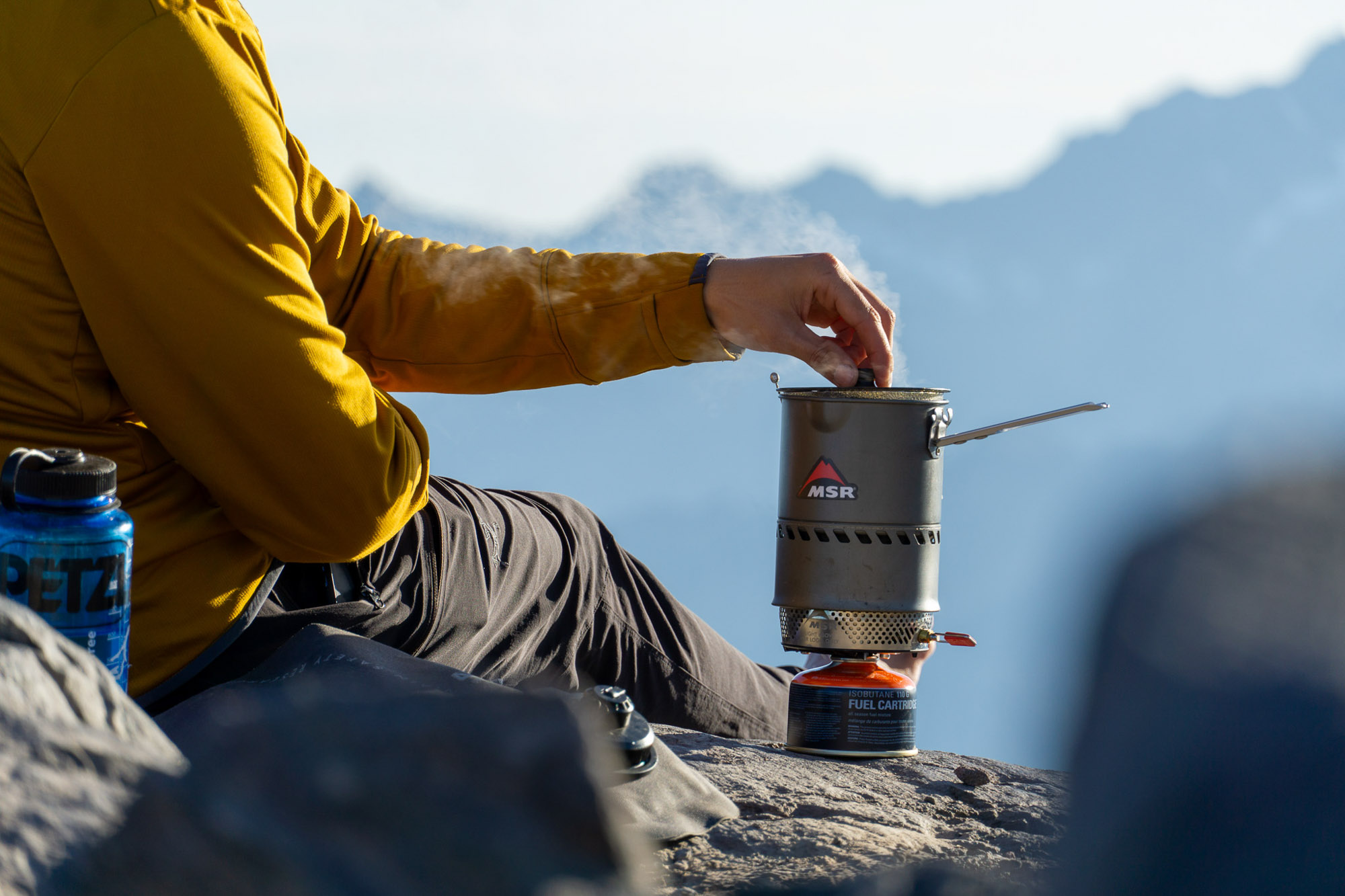
Our Testing Process and Testing Grounds
Our backpacking stove testing breaks down into two broad categories: field and bench testing. Field testing puts these stoves smack dab in the middle of the action, and we lean on them to provide hot meals at the ends of our regular backpacking trips. Many of these stoves are tailored for different types of backpackers or trips, so we aim to use them as they were intended.
That means stoves like the MSR EGK get sent to Alaska, and ultralight units like the BRS-3000T head out on the PCT. When we’re out in the field, we’re looking at ease of use, how it sets up, how packable it is, how adaptable it is in unexpected scenarios, and ultimately, how it feels to use on a day-to-day basis. We use a stove for months, if not years, and are answering the questions: What is this stove best at? Where can it be improved? And who does it fit best?
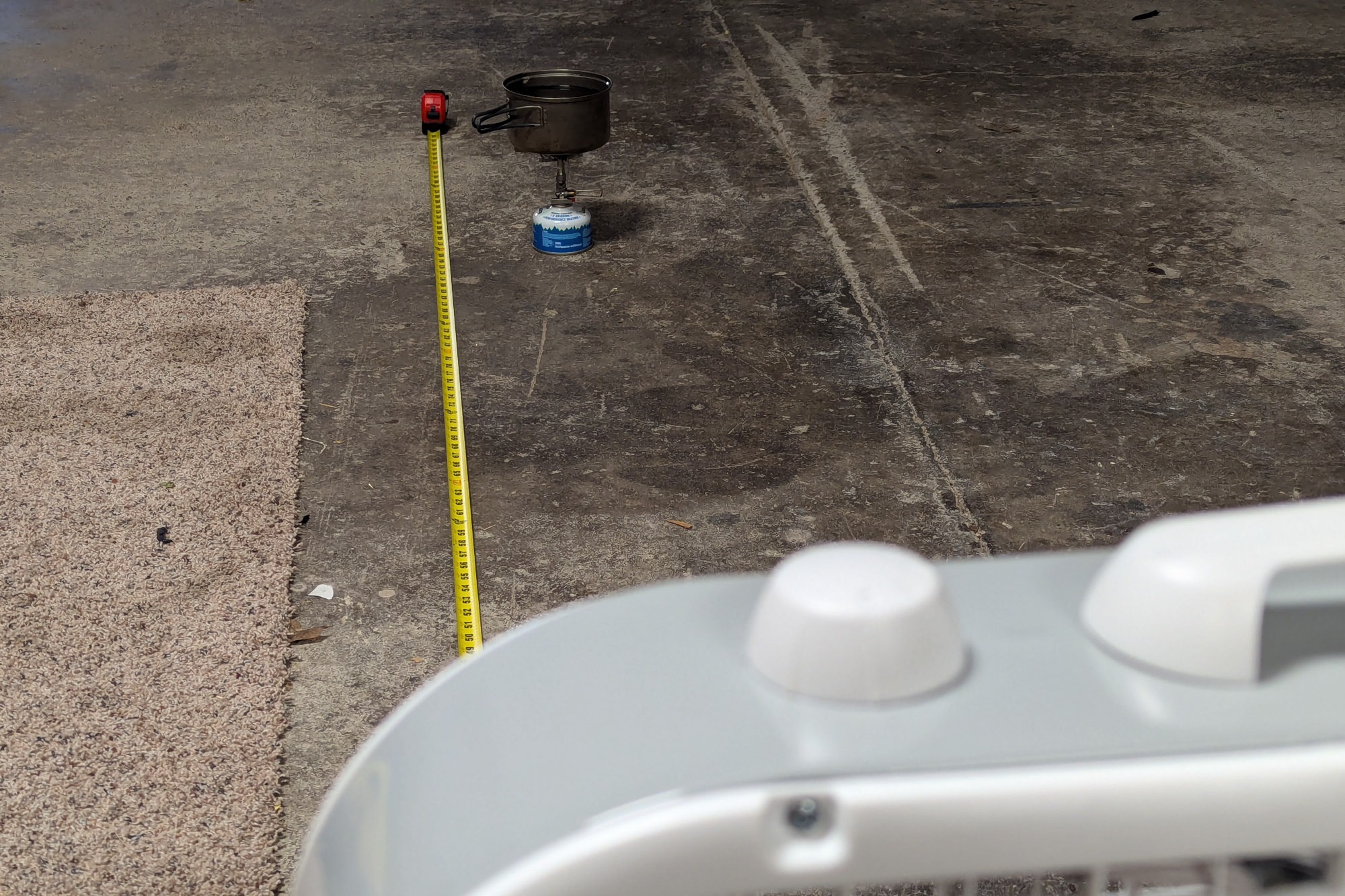
All of these stoves also eventually hit the bench, where we’ve assembled a slate of tests to measure them as fairly as possible against one another and answer these questions: How quickly can a stove boil a liter of water both with and without wind? And how fuel-efficient is it while doing so?
Here’s how it works: we set up a timer and thermometer, turn the stove to max output, bring a liter of cool tap water up to a boil in a lidless titanium pot, and measure the fuel container before and after. For simulating wind, we use a generic box fan set to medium and place the stove 8 feet away.
During these tests, we’re focused on the small details so things stay consistent. The tests take place in a large draftless indoor room. Each stove gets a fresh optimized fuel source. Starting water temperatures are identical, and we’re using the same wide-base titanium pot.
When all is said and done, we come away with both expert opinions and hard data — a combo that ensures you’re getting the best stove recommendation for your backcountry kitchen setup.
Our Stove Rating System
We settled on four rating metrics to compare and contrast these backpacking stove systems on, aiming to get the best idea possible of where they excel and where they make compromises.
Boil Time
We rate the time it takes for a stove system to boil as one of the most important aspects. We look for a sub-5-minute time for an acceptable rating, sub-4 minutes for a good one, and sub-3 minutes for a great rating.
Fuel Efficiency
Fuel efficiency is at odds with boil time, so a high rating there likely means a lower one here — but not always. Some stoves are very good at balancing their fuel use with putting out enough BTUs, and these stoves rate the highest in this metric. This rating takes into account both fuel consumption per 1 liter boiled and the total burn time a stove is capable of.
Weight
Backpacking equipment should aim to be lightweight and not weigh you down. To earn a high score, we look for weights that are less than half a pound for standalone burners, and less than 1 pound for integrated stove systems. The most ultralight stoves are often not the best performers in boil time or efficiency, but get high marks here.
Ease of Use
We consider the overall ease of use when rating these stoves. That inspection includes compiling our testing notes on how well they set up, how well they simmer and boil, and how easy they are to clean and store. Modern integrated stove systems rate higher than standalone options, while old-school liquid fuel options rate lower.
Buyer’s Guide: How to Choose a Backpacking Stove
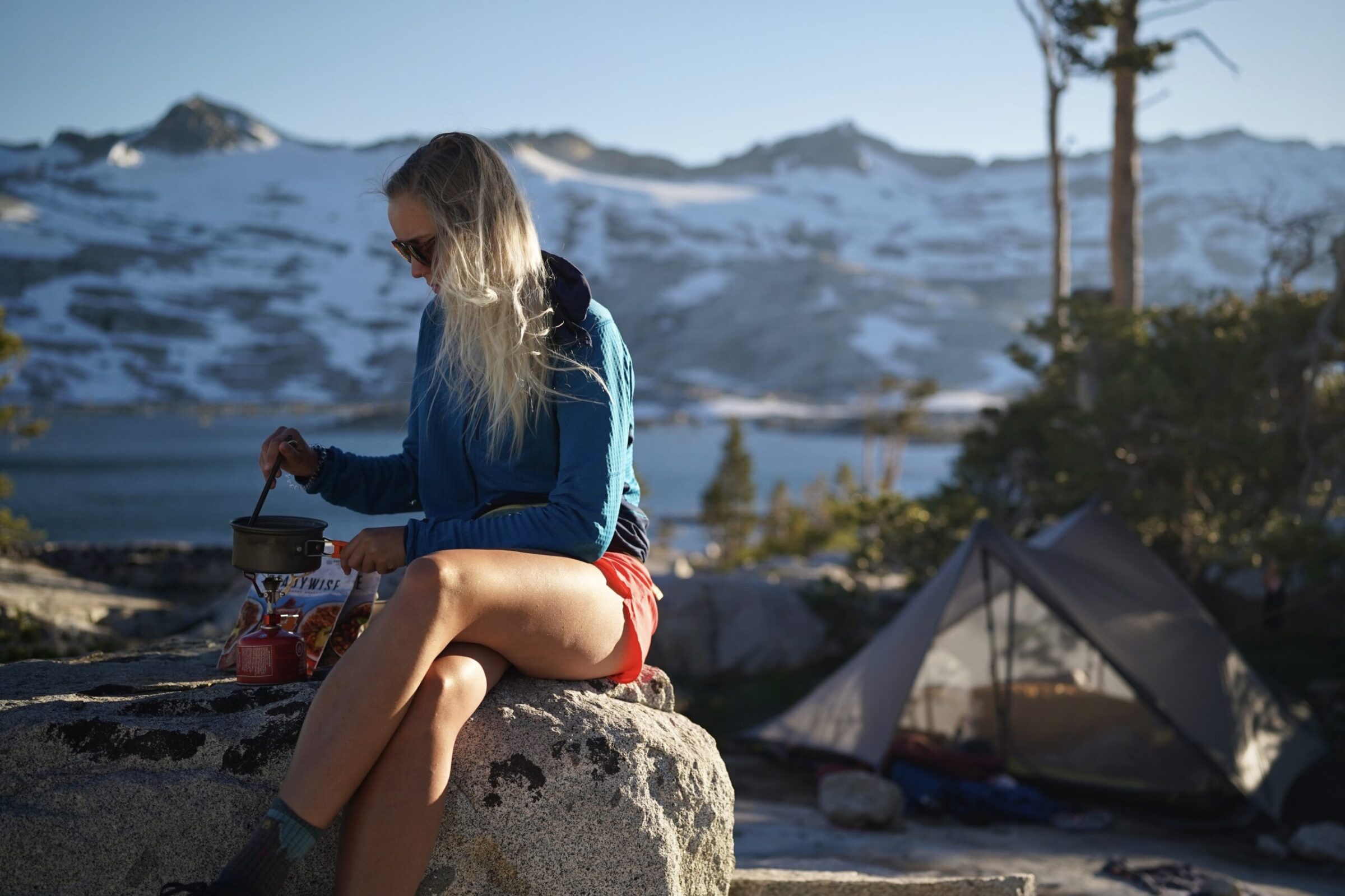
The right stove depends on a variety of factors. What works for one person might not suit your particular adventures. Read on for tips on choosing the best backpacking stove.
It’s also worth noting that this article focuses solely on backpacking stoves. If you’re looking for a larger two-burner camp stove, check out the Best Camping Stoves of 2025. Also, take a peek at our guide to the Best Backpacking Meals for some backcountry culinary inspiration.
Types of Backpacking Stoves
There are various types of backpacking stoves, and which one you choose depends on personal preference and the type of adventure you plan to use it on.

Canister Stoves
These stoves typically screw directly onto a fuel canister filled with a blend of isobutane-propane. Benefits include ease of use and low maintenance.
On the flip side, canisters can’t be refilled, causing additional waste (they can be recycled, but you’ll need to take them to a recycling facility). And they’re prone to freezing up or providing a weak flame in cold winter conditions.
Top examples of canister stoves include the SOTO WindMaster and MSR PocketRocket Deluxe.

Liquid Fuel Stoves
These stoves connect to refillable fuel bottles. They are generally filled with white gas, but you can also use other fuels, including kerosene and gasoline. This is ideal if traveling overseas. This stove type can be slightly more complicated to use (in other words, it requires maintenance), but it performs well in cold conditions.
Our top pick for liquid fuel stoves would be the MSR WhisperLite Universal, followed closely by its expedition-ready cousin, the XGK EX.

Woodburning Stoves
The traditionalists out there will appreciate a wood stove. You get the pleasure of cooking over a fire packed into a smaller space. The upside is you don’t need to carry fuel. The downsides include susceptibility to wind, unpredictable cook times, and fire restrictions.
These are fantastic options for those looking to harken back to the roots of the backcountry culinary art. But, these aren’t the most reliable stoves for long journeys. Trudge through the rain all day and there may not be any dry tinder to warm up that freeze-dried spaghetti you so meticulously prepared beforehand. If you do decide to go this route, either bring a backup fuel source or embrace occasional cold-soaking.
The Solo Stove Lite and Vargo Titanium Hexagon are some of the better wood-burning backpacking stoves on the market.
Stove Use: Cooking vs. Boiling
If you plan to eat mainly dehydrated backpacking meals (just add water), you’ll want a simple stove with a fast boiling time. If, on the other hand, you’d like to cook more elaborate meals, it will be more important to find a stove with better simmer control, and maybe a wider burner.
Think about how often and for what type of cooking you’ll be using your backpacking stove before buying.

Stove Packed Size and Weight
The stoves on this list weigh anywhere from an ounce to 2 pounds (but most are within the 3- to 9-ounce range). Some can fit in the palm of your hand, and some take up a bit more room.
Not everyone needs the tiniest stove on the market. Especially if you camp year-round, you’ll want to choose a four-season stove, or one better rated for cold performance.
There are also a few differences to consider between size and packed size. For example, the Jetboil stove itself is larger and slightly heavier than other canister stoves on our list. However, it integrates with all the other components and packs down super small (including the pot, lid, stove, and fuel).

Weight is another consideration. If you are going on a 2-day overnight, weight won’t matter as much as, say, a 30-day wilderness trek.
Also, think about what other gear you’ll be carrying. Do you have a lightweight backpacking tent that doesn’t take up much space? Or will you be carrying lots of equipment, like a camera or climbing gear?
If you frequent forests or parks that allow folks to collect firewood, or if you are going to an area where fuel is harder to come by, maybe a wood stove would be the best option. If you’re an ounce counter, an ultralight canister stove may be what you’re after.
Winter and Cold Performance

Not all stoves are created equal, and nowhere is this more evident than in the frigid temps of winter camping conditions. If you camp in the warmer months only, this isn’t a concern.
But if you head out in the winter, you’ll probably use your stove to melt snow and boil a lot of water. You need to be able to rely on it when the mercury drops. The MSR Reactor is a great stove for this purpose.
For this, you’ll want a liquid fuel or four-season stove. We’ve found liquid fuel stoves to be the most reliable choice in winter.
Other Considerations
Group size: If you regularly backpack and plan meals with a group (families, college students), consider dispersing the weight and investing in a larger group cookset and stove. Or, a wider burner that can accommodate a variety of pots and pans. The MSR WhisperLite Universal is a great choice for group camping.
If you’re a solo adventurer, a smaller canister stove, like the popular MSR PocketRocket 2, is a fine choice.
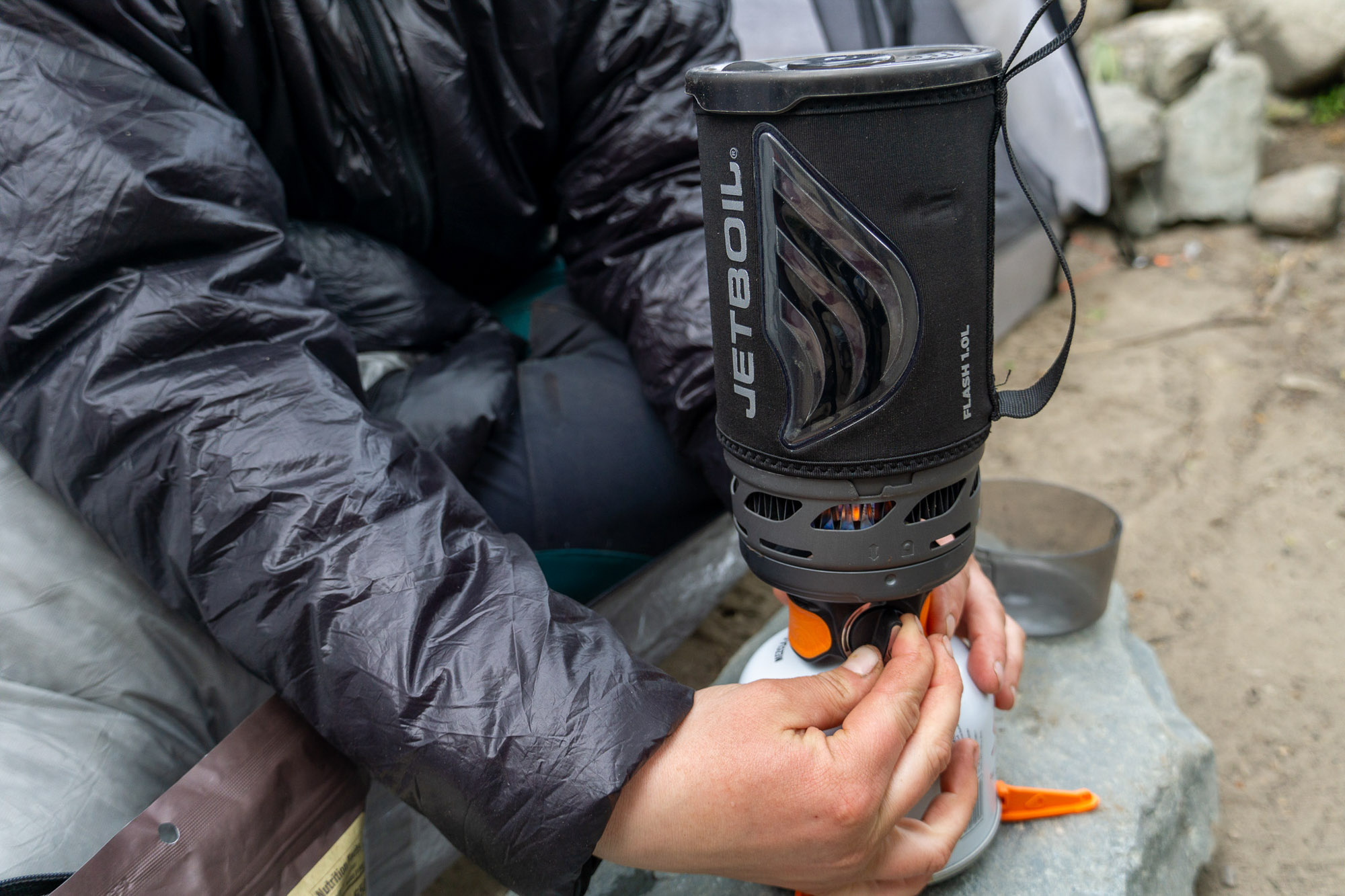
Tips for Using a Backpacking Stove
- When you buy your first backpacking stove, invest in a few extra fuel canisters too. This lets you have a stockpile for spur-of-the-moment trips and early-morning endeavors — you won’t have to run to a store to track down fuel.
- Always read the instructions. (Yes, even if you are familiar with camp stoves.) The instructions will tell you how to prime your stove, and might even have tips on cleaning and repair.
- Avoid spills by setting up on the flattest spot possible. Flat rocks make great cooking surfaces.
- Always bring matches to light your stove in case of an emergency. Yes, even if your stove has a piezo igniter. Igniters can fail, lighters can break, and there’s nothing sadder than a cold meal because you can’t get a flame.
- Never cook inside your tent or vehicle. On top of being a fire hazard, this can cause carbon monoxide poisoning and death. If you camp frequently in rainy climates, invest in a tarp and some guy line for a safe overhead kitchen shelter.

Price & Value
A good stove rounds out your backpacking equipment list, and while there’s a range available, it generally won’t be too spendy to get something that should work for most of your adventures outdoors. That said, there are a handful of specialized stove systems that can ask a pretty penny, so consider where you’ll be using your stove, as well as how often, and even what you’ll be cooking most.
Budget
Spend-wise backpacking stoves like the GSI Outdoors Glacier ($30) are simple in design, easy to use, and get the job done — just don’t expect them to be rich with features. You likely won’t see integrated ignition systems in the budget price range, or pressure regulators, but we’ve whipped up many meals on stoves like these, and they perform great.
The Glacier is a bit tougher to pack away as it doesn’t fold down. The BRS-3000T Ultralight Stove ($17), on the other hand, is very small, almost to the point of being too small and having too tight a flame pattern. There are tradeoffs for everything, but you’ll notice them a bit more the less you pay.
Mid-Tier
Spending a bit more will get you a stove that’ll work for a wider variety of trips. Between $50 and $100 are many great canister stoves like the MSR PocketRocket Deluxe ($85), as well as alternative fuel stoves like the woodburning Solo Stove Lite ($70). For the money, you’ll see some options sport piezo ignitors, have better wind resistance, pack down more compactly.
In another tier are stove systems, which you should expect to pay between $130 and $200. Options like the Jetboil Flash Fast Boil ($130) or MSR WindBurner ($200) put the whole package together and offer a stove that works in tandem with its cook pot, offering better efficiency and wind resistance.
Premium
Anything north of $200 is undoubtedly specialized for rough terrain or weather, and both the MSR XGK EX ($220) and MSR Reactor ($290) are primed for expeditions into cold climates. A liquid-fueled option like the XGK will be overbuilt and field-repairable (and will run on nearly any liquid fuel, to boot), while the Reactor uses a pressure regulator and radiant burner head to keep going when things get chilly.
Frequently Asked Questions
Camp stoves and backpacking stoves are both built for use in the outdoors, but they vary wildly in features. Camping stoves weigh anywhere from 6 to 15 pounds, and they’re designed for use on a camp table or picnic table in more front-country settings (you won’t want to carry one far).
On the other hand, backpacking stoves are designed to hike with. They weigh 1-12 ounces, and they’re designed to pack small to fit in a pocket or pack.
Backpacking stoves tend to have a single burner, with some sort of fuel connector, regulator/simmer dial, and pot support platform. That’s it!
The best backpacking stove that won us over in testing was the MSR PocketRocket Deluxe (the PocketRocket 2, the previous model, is also a solid stove).
However, we recognize that this isobutane canister stove might not fit everyone’s needs, or maybe budget. Which is why we’ve compiled our list of best backpacking stoves by fuel type, and also differentiated by price and size.
The smallest canister stove we tested was the BRS-3000T at 0.9 ounces, with the MSR PocketRocket 2 coming in second at 2.6 ounces.
For just a fraction more ounces, and with a few more features (piezo igniter), you can consider our top choice, the MSR PocketRocket Deluxe, which rings in at 2.9 ounces.
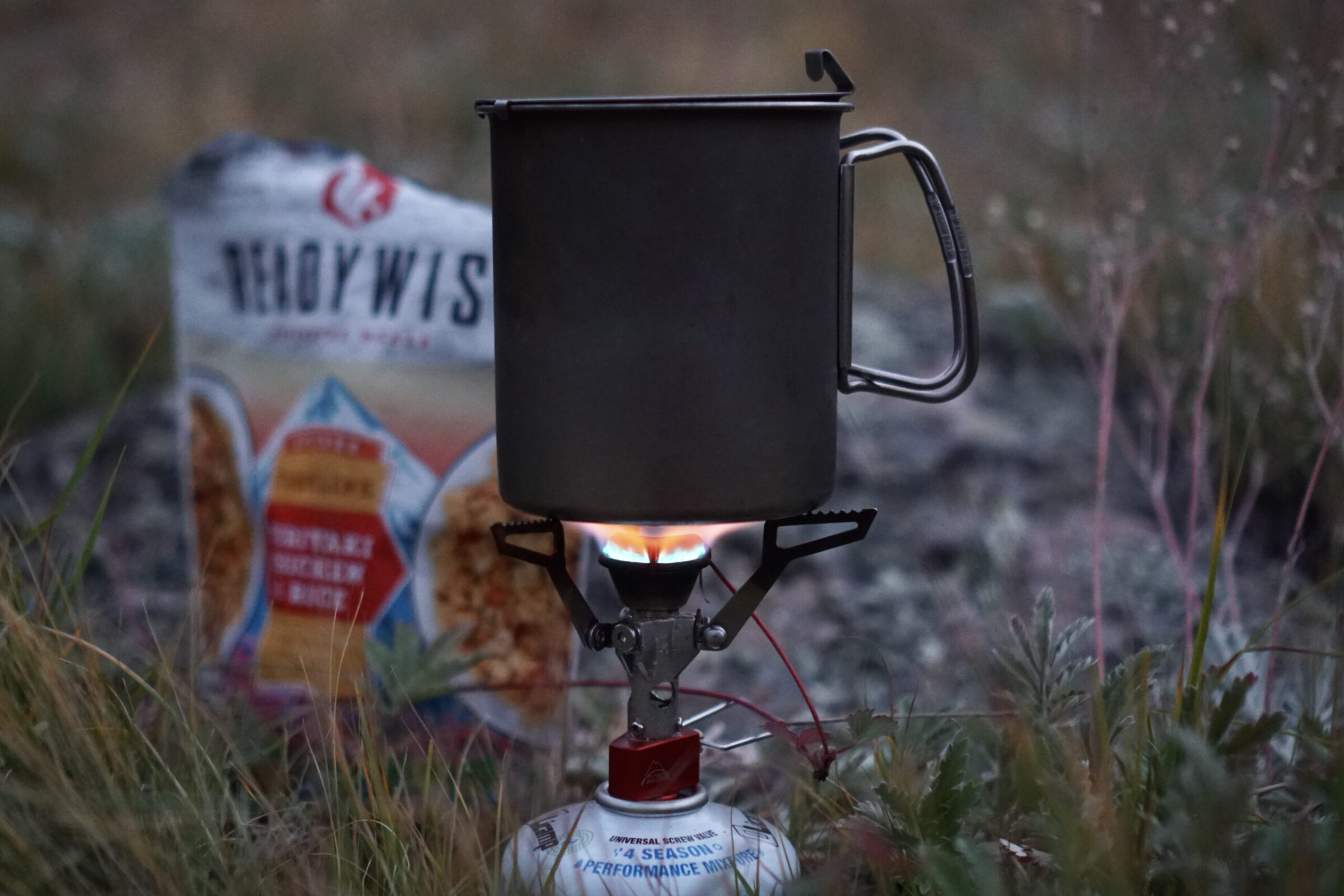
BTU stands for British Thermal Unit — essentially, it’s a measurement unit of heat. In stove speak, BTUs refer to the energy required to raise the temperature of boiling water. Higher BTUs mean a stove will have a more powerful output of energy and/or heat (not necessarily hotter).
Lower BTUs have a weaker output, but are often better for simmering and providing a more controlled regulation of your stove’s flame.
As you can see, stoves range widely in price! But expect to pay at least $25-50 for a durable backpacking stove.
If you are on a tight budget, consider waiting until your favorite stove is on sale. (Pro tip: Bookmark this article and check back on prices throughout the season.)
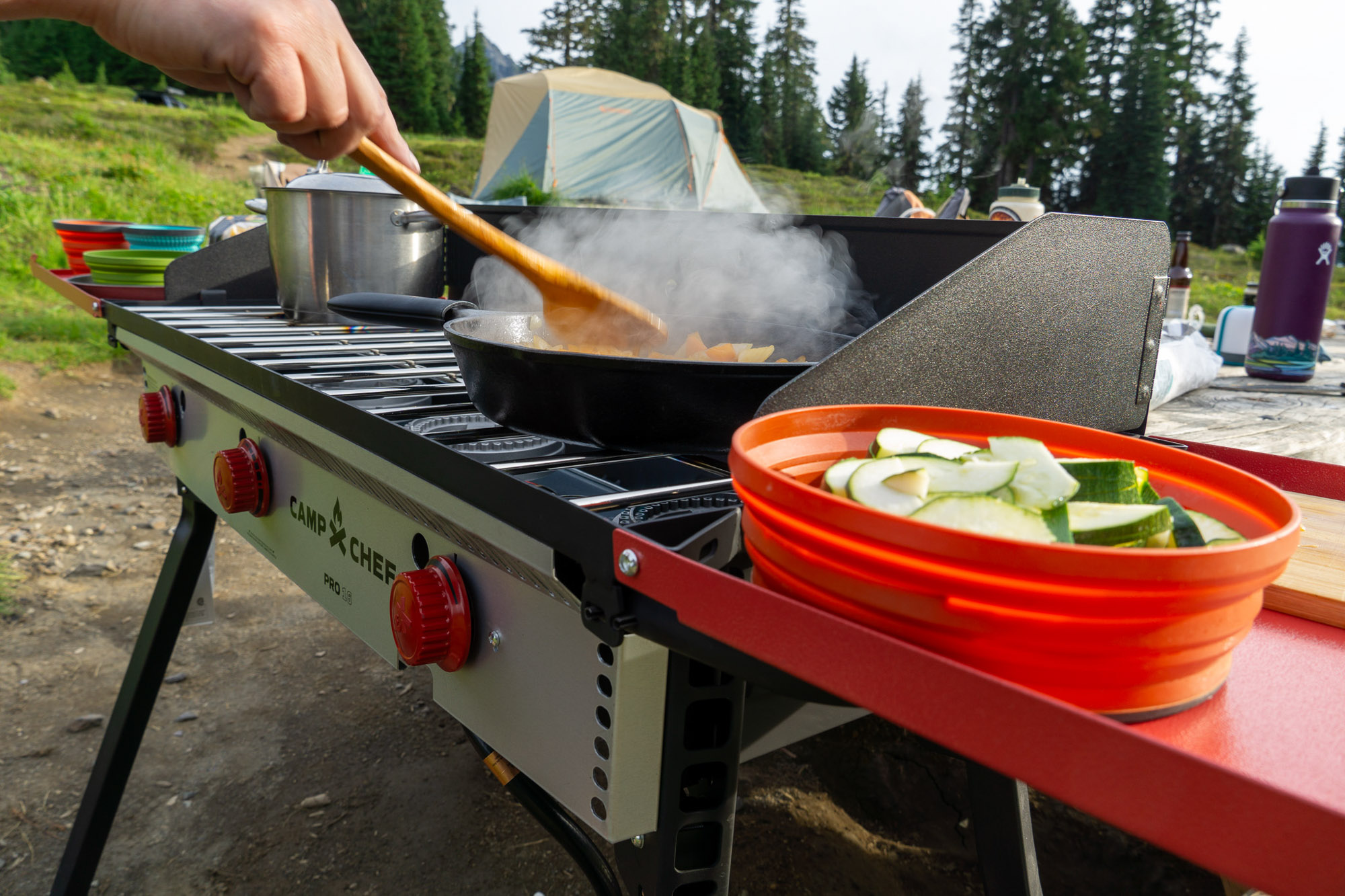
The Best Camping Stoves of 2025
We tested the best camping stoves from Coleman, Camp Chef, Primus, and more for this review. Check it out to see how each performs and which stove came out on top.
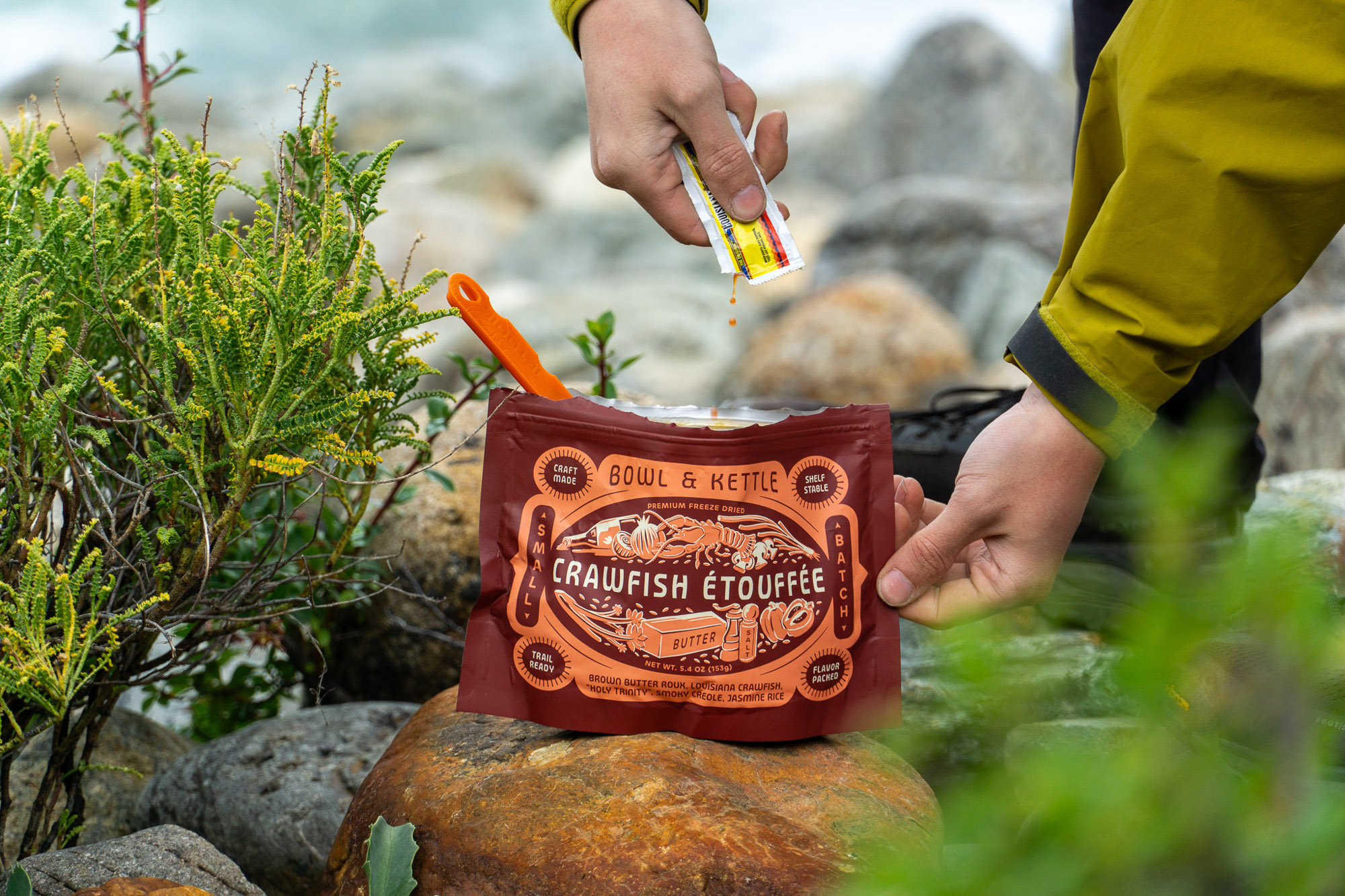
The Best Backpacking Meals of 2025
Backpacking meals are light, easy to pack, long-lasting, and easy to make with just boiling water. And they’re getting better all the time.

